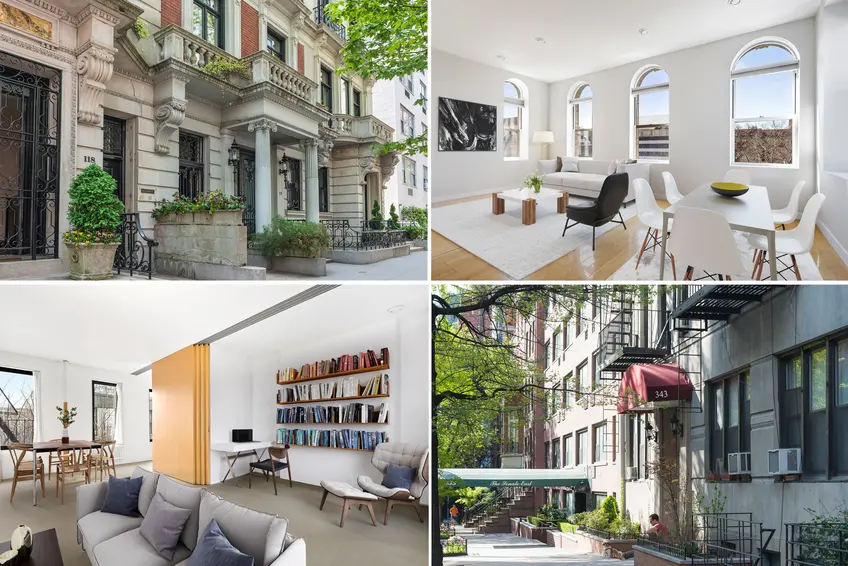
In New York City, the fame and success of Soho and Tribeca have inspired portmanteaux for neighborhoods on the rise. But for every Nolita or NoMad that quickly enters the local lexicon, there's a BoCoCa, NoHa, or SoCo that never quite takes.
It's reached a point where such combinations have turned into something of a punchline, but it's important to remember that these were fairly innovative in their time. Previously, developers looked to New York City's history, which dates back to before the Revolutionary War, when naming a neighborhood. We explore the meaning behind some of the city's most curious neighborhood names, as well as listings emblematic of the areas.
It's reached a point where such combinations have turned into something of a punchline, but it's important to remember that these were fairly innovative in their time. Previously, developers looked to New York City's history, which dates back to before the Revolutionary War, when naming a neighborhood. We explore the meaning behind some of the city's most curious neighborhood names, as well as listings emblematic of the areas.
In this article:
Manhattan
It’s common knowledge that the name Tribeca is a portmanteau of Triangle Below Canal Street. But a lot of people don’t know that it came about as local artists, inspired by their counterparts in Soho (see below), sought to legalize their live/work situation in the early 1970s. The phrase was originally meant to apply to one triangular-shaped tax block (whose neighborhood has since been designated a historic district), but The New York Times thought it applied to the whole neighborhood and the name stuck. Before that, it was more commonly known as the Lower West Side or Washington Market, for its past as a food market.
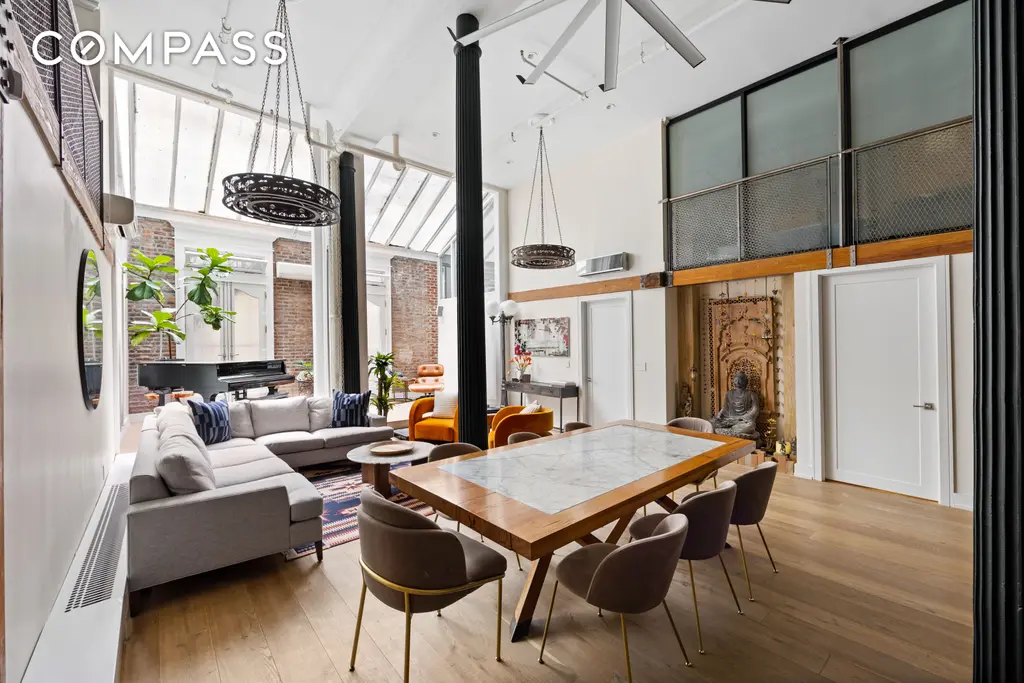
The Tribeca Lofts, #1R (Compass)
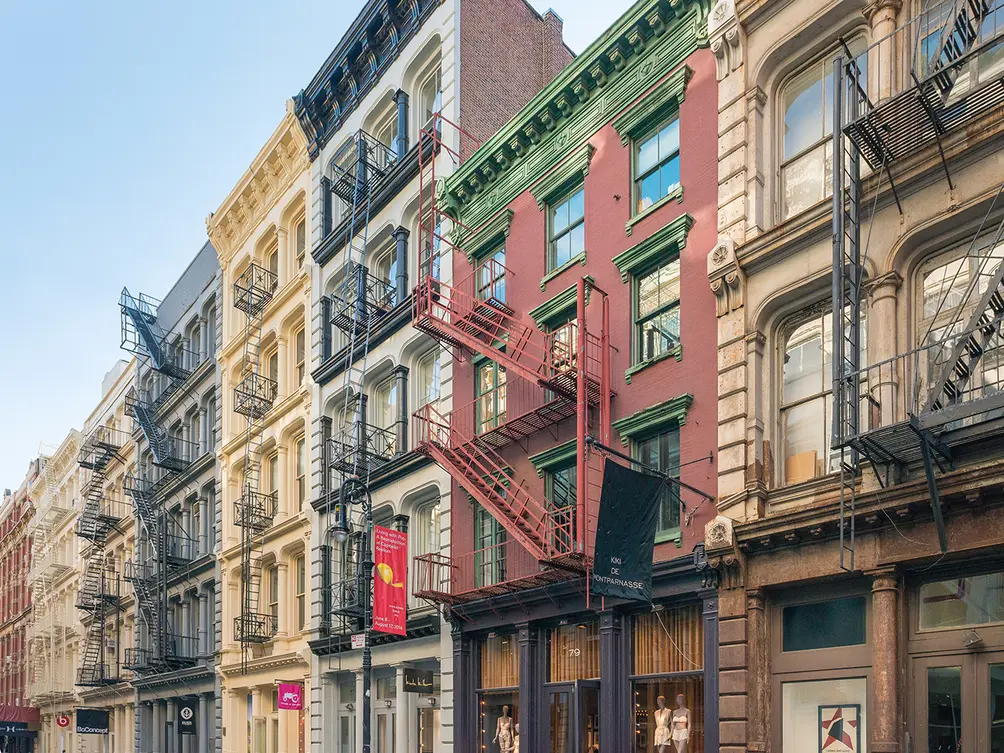 SoHo (CityREalty)
SoHo (CityREalty)
We tend to think of neighborhoods with trendy portmanteau names as modern affectations, but the trend goes back to the 1960s with Soho among the leaders of the charge. Urban planner Chester Rapkin coined the name in The South Houston Industrial Area Study, naming the area “South of Houston Street.” The name brings a bustling section of London to mind, but the New York neighborhood has emerged as a destination in its own right.
For a while, a short stretch of Lafayette Street went from industrial to largely ignored. Then, as artists moved in and started using the buildings as live-work space, others took notice and started converting the industrial buildings to residential. Thus Noho, or "north of Houston Street" was born.
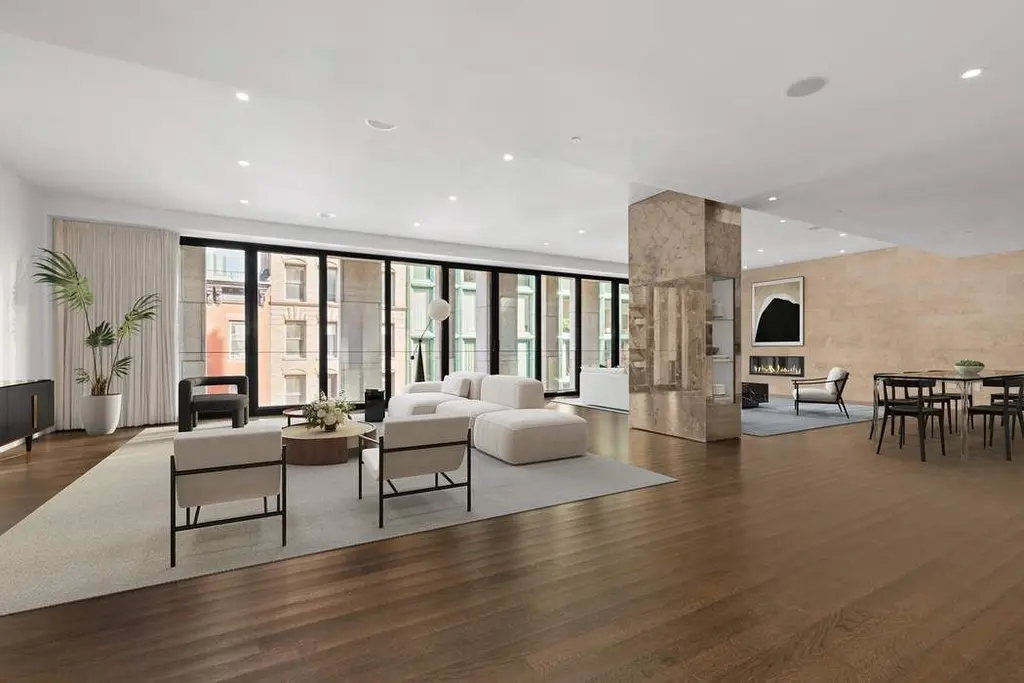
25 Bond Street, #4E (Sothebys International Realty)
For many years, the Lower East Side was one large, working-class stretch of Lower Manhattan. But starting in the 1960's, an influx of artists and a new creative class moved in to create a distinct culture. Savvy business owners seized on its close proximity to the nearby Greenwich Village (see below), and a new neighborhood was born.
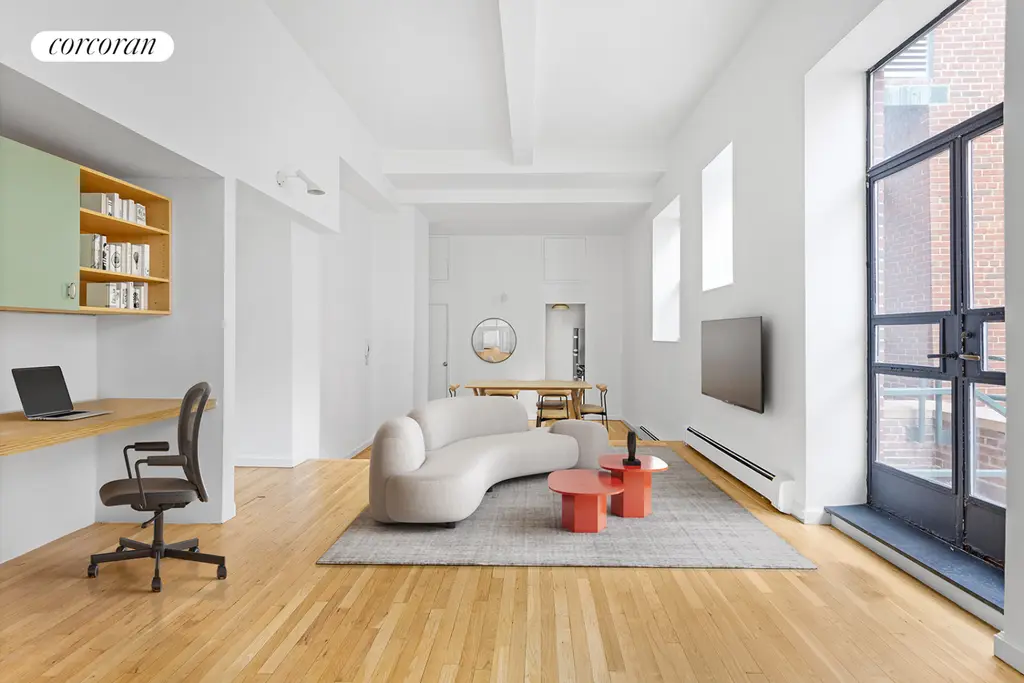
Christadora House, #4A (Corcoran Group)
Back when New York was still known as New Amsterdam, this stretch of Lower Manhattan was dubbed “Groenwijck,” the Dutch for “pine district,” in a nod to what was once, as surprising as it may sound now, a rural setting. The name was later anglicized to “Greenwich,” but many of us simply call it “the Village” today.
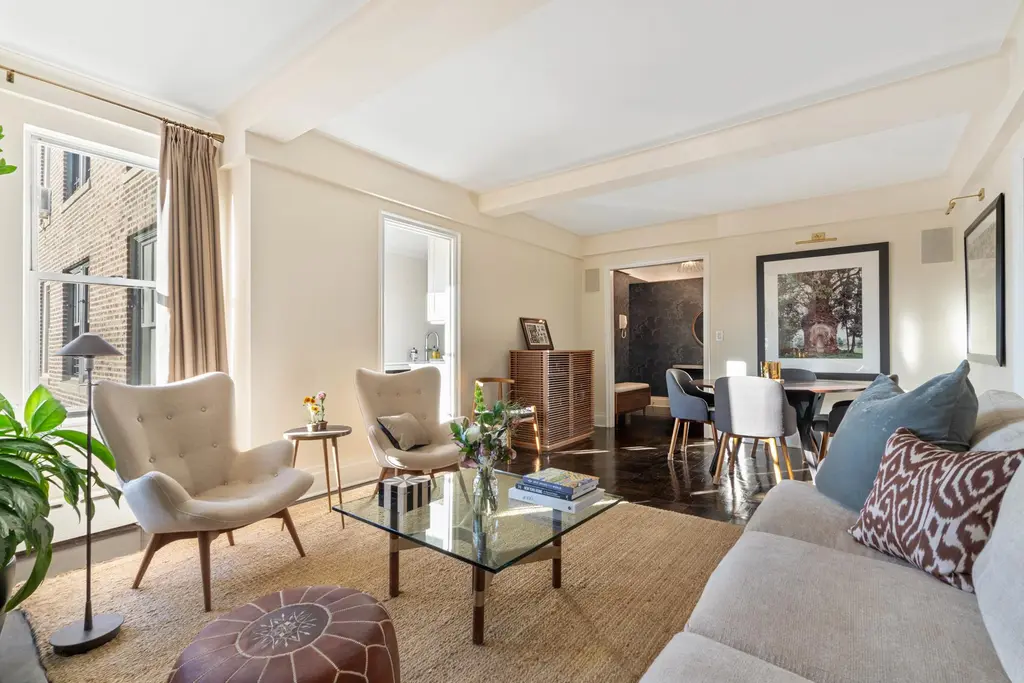
The Waverly, #12A (Douglas Elliman Real Estate)
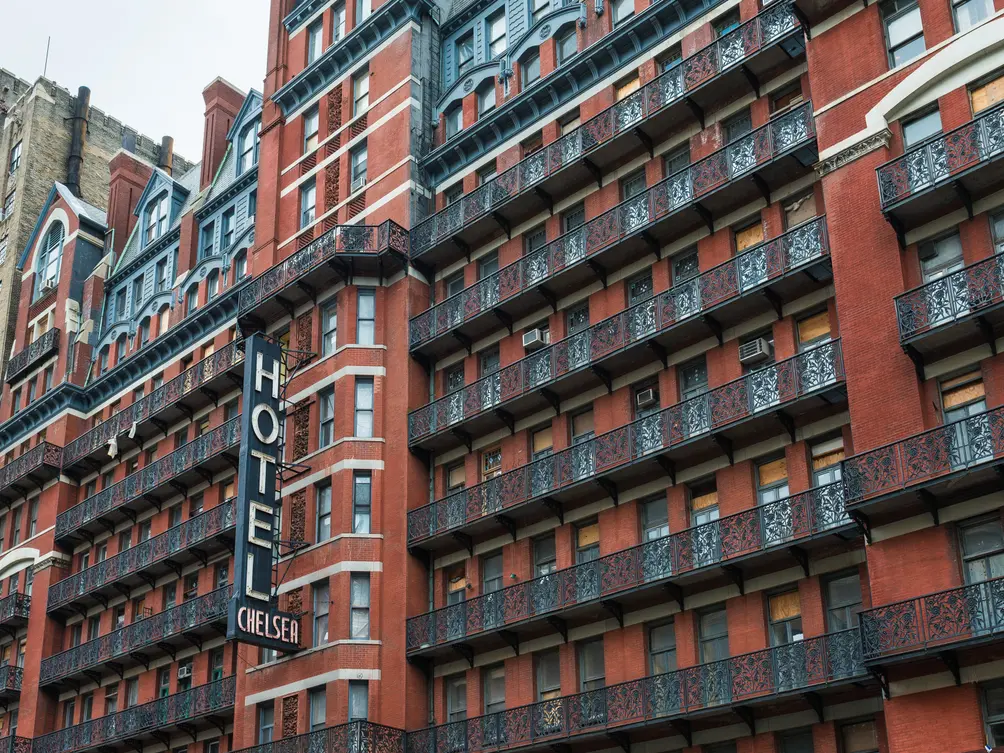 (CityRealty)
(CityRealty)
Before the Revolutionary War, retired British Major Thomas Clarke bought 94 acres of land between what is now West 21st through West 24th Streets, from the Hudson River to the current Eighth Avenue. He named his new estate after a veteran’s hospital in London. Indeed, as the centuries passed, the New York neighborhood would come to have quite a bit in common with its British counterpart including a reputation as an artists’ enclave, housing the height of fashion, and real estate with equally jaw-dropping aesthetics and prices.
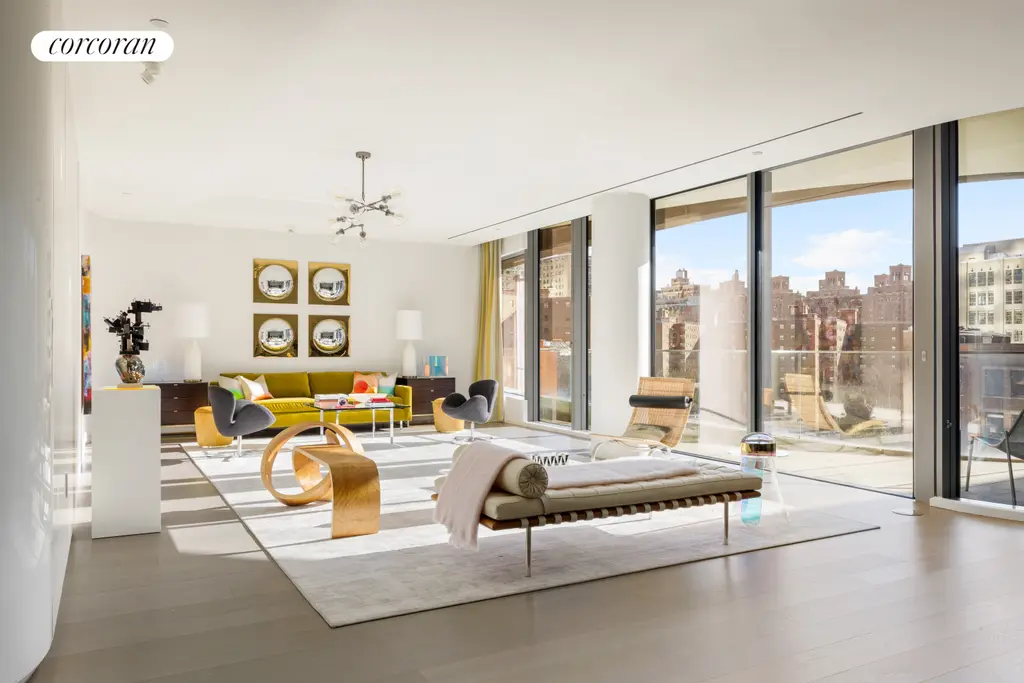
520 West 28th Street, #27 (Corcoran Group)
To pass by New York's only private park and the gracious architecture surrounding it, one would think Gramercy has always been a well-tended neighborhood. However, the area was once known as "Krom Moerasje," the Dutch for "small crooked swamp." Years later, when it became the home of one of New York's first city planning attempts, the name was Anglicized to "Gramercy Seat," from an Old English word meaning "many thanks."
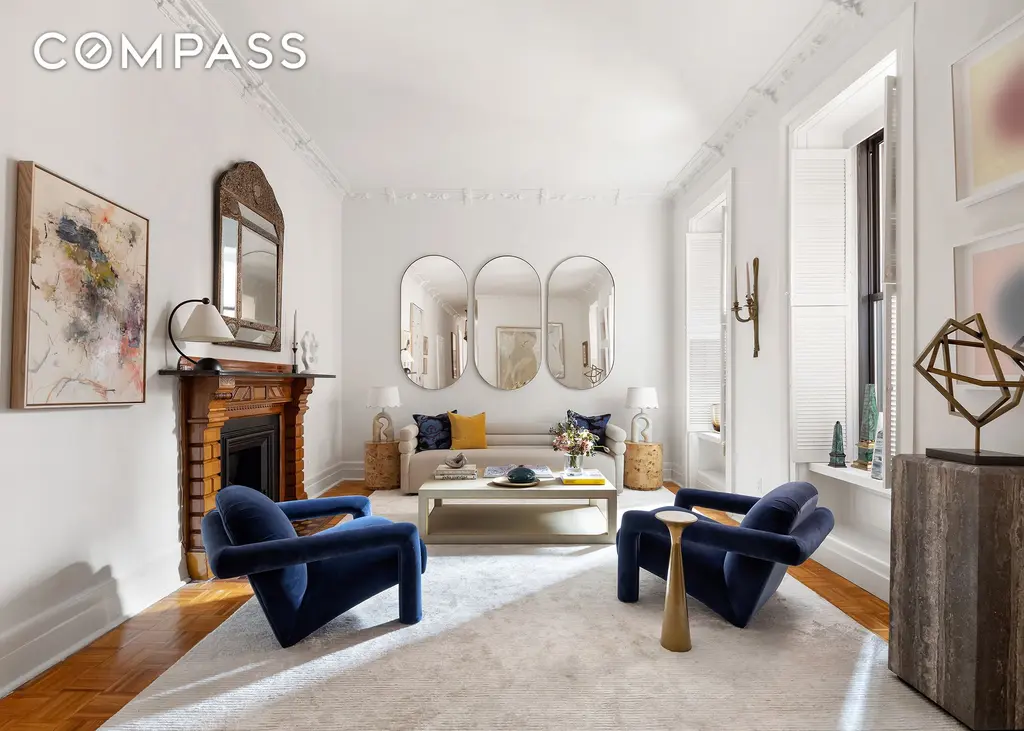
The Gramercy, #1BR (Compass)
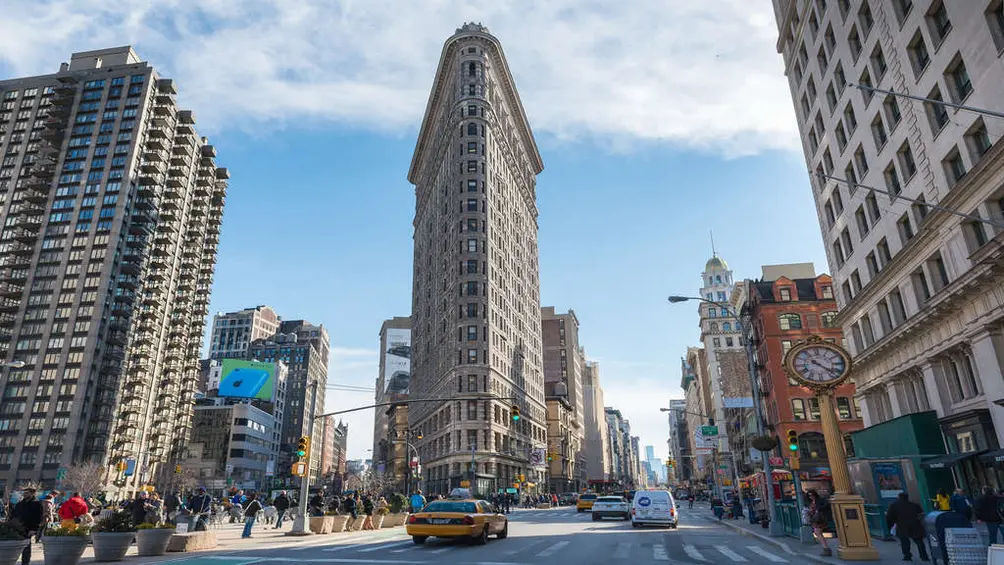 Flatiron Building via CityRealty
Flatiron Building via CityRealty
When a triangular building took shape on Fifth Avenue and 23rd Street in 1902, it was originally dubbed the Fuller Building. However, its resemblance to a hot clothing iron inspired the more widely known name of the Flatiron Building. The surrounding area was known as the Toy District and Photo District for years, but was designated the Flatiron District in the mid-1980s as the area got more residential.
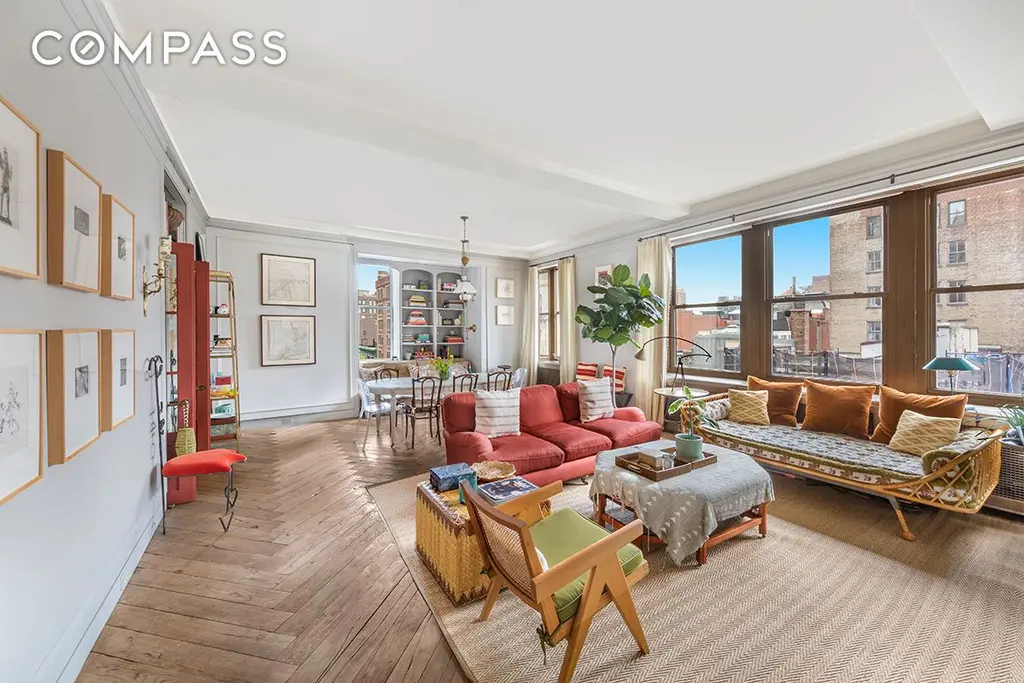
Holtz House, #9F (Compass)
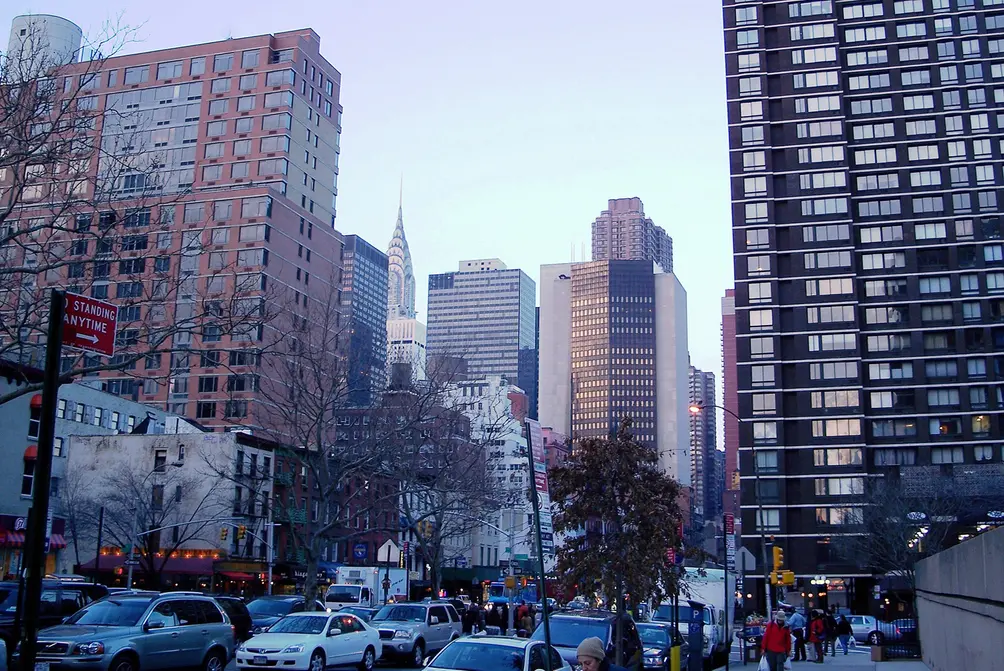 Kips Bay (en:User:Kips Bay; cropped by Beyond My Ken (talk) - en:User:Kips Bay (Originally uploaded on en.wikipedia - Transferred by Beyond My Ken), CC BY 2.5, https://commons.wikimedia.org/w/index.php?curid=16458941)
Kips Bay (en:User:Kips Bay; cropped by Beyond My Ken (talk) - en:User:Kips Bay (Originally uploaded on en.wikipedia - Transferred by Beyond My Ken), CC BY 2.5, https://commons.wikimedia.org/w/index.php?curid=16458941)
This riverfront neighborhood was named in honor of Jacobus Kips, whose manor house was leased as a quarantine facility for yellow fever patients. Centuries later, the neighborhood is best known as home to NYU Langone Health, Bellevue Hospital, Alexandria Center for Life Sciences, and the forthcoming Science Park and Research Campus (SPARC) Kips Bay, but is in the midst of a residential renaissance.
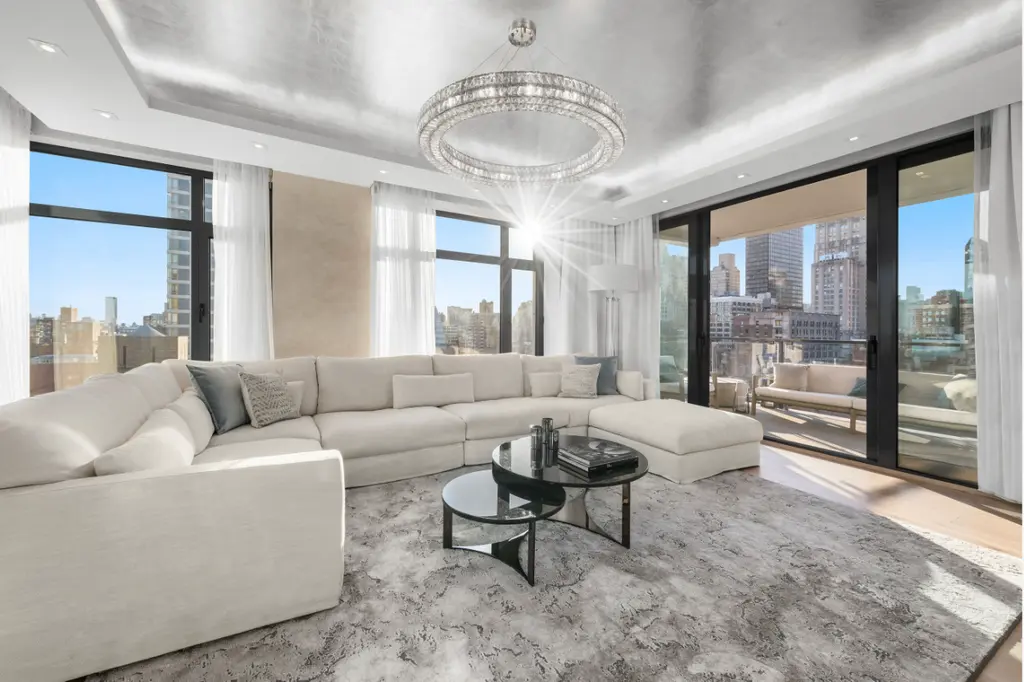
Hillrose28, #PH1 (Serhant LLC)
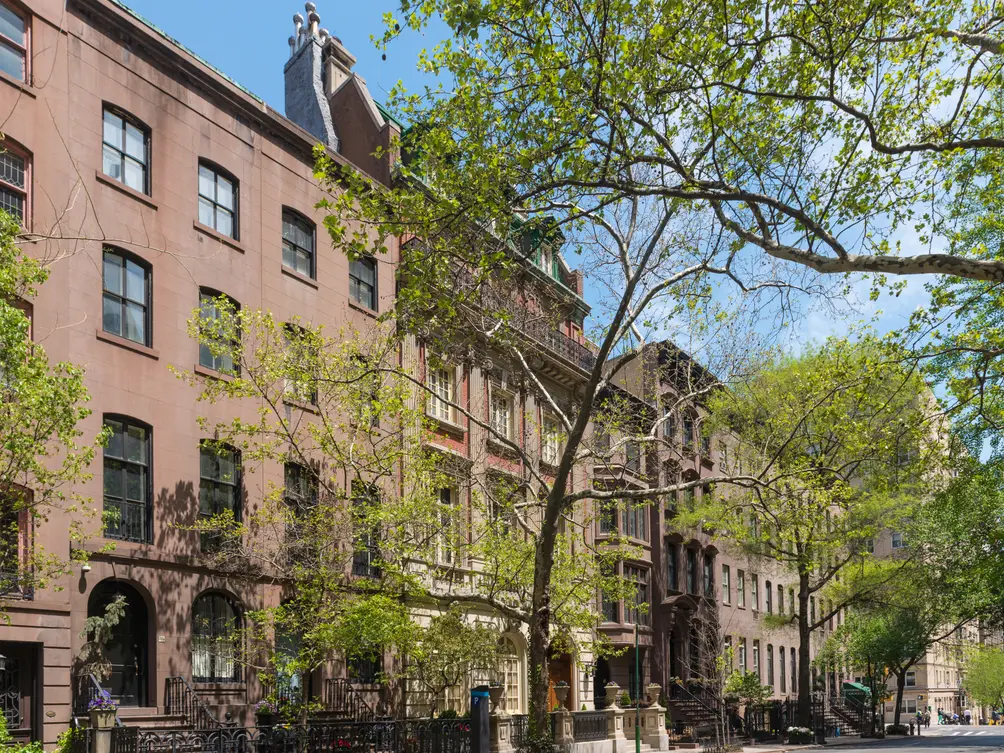 (CityRealty)
(CityRealty)
Murray Hill is named in honor of Robert Murray, an 18th-century shipping tycoon who rented land from the city for a large house and farm on what is now Park Avenue and East 36th Street. This was a relatively isolated area at the time, but the following centuries brought several offices, museums, and diplomatic missions to the neighborhood. Recent years have also seen a wave of residential interest.
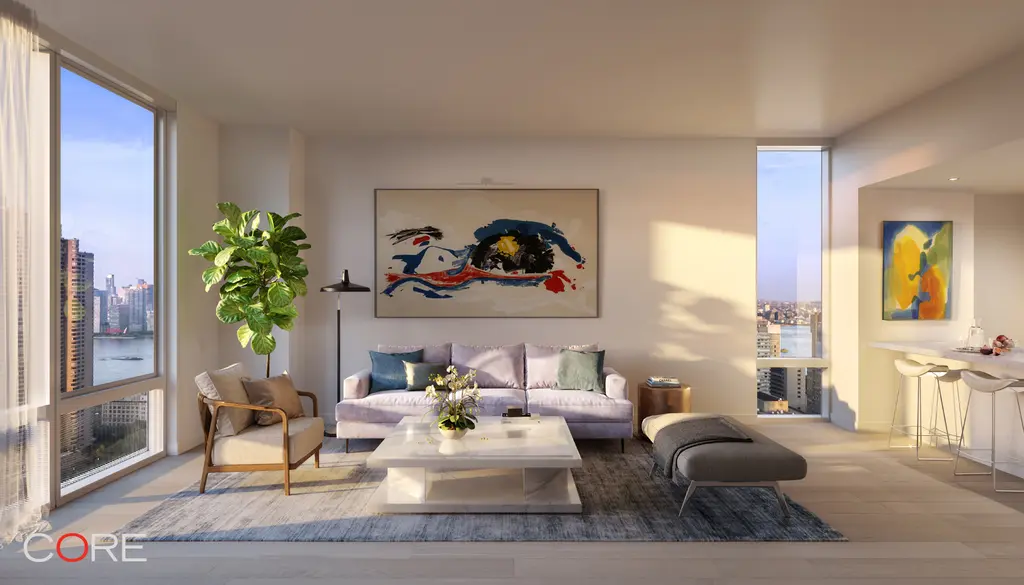
Eastlight, #20d (CORE Group Marketing LLC)
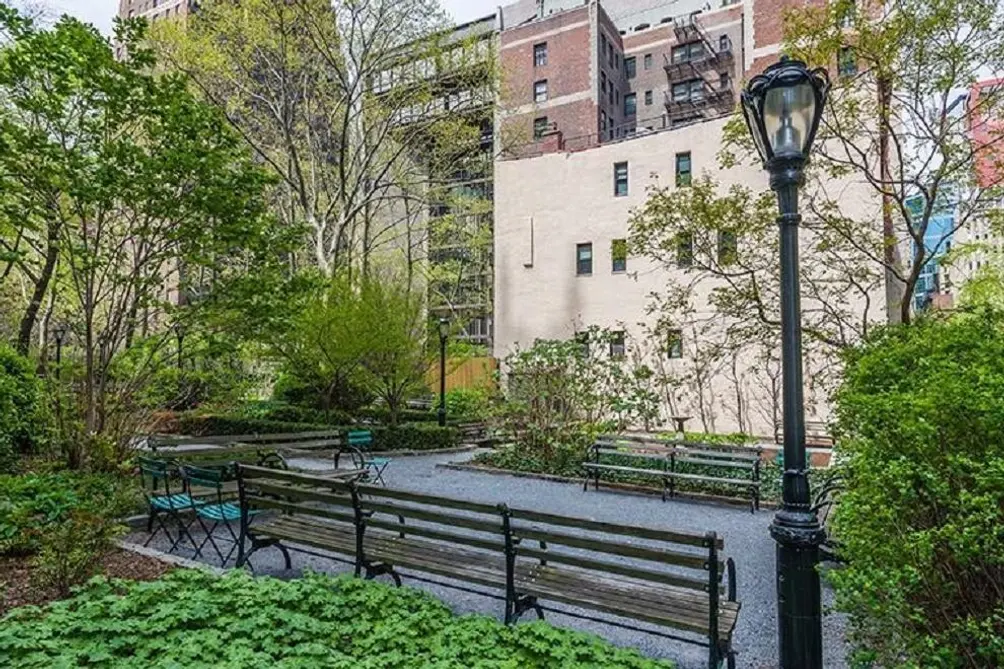 Turtle Bay via The Corcoran Group
Turtle Bay via The Corcoran Group
This section of Manhattan is now known for its stately townhouses and the United Nations Headquarters, but it was originally a piece of farmland bequeathed by the Dutch government in 1639. To see the numerous reptilian inhabitants of the creek running through Turtle Bay Farmland, one might naturally assume they inspired its name. However, the Turtle Bay Association has suggested that it was taken from deutal, a Dutch word for "bent blade" that the bay resembled.
Turtle Bay House, #13D
$1,595,000
Turtle Bay/United Nations | Condominium | 2 Bedrooms, 2 Baths | 1,494 ft2
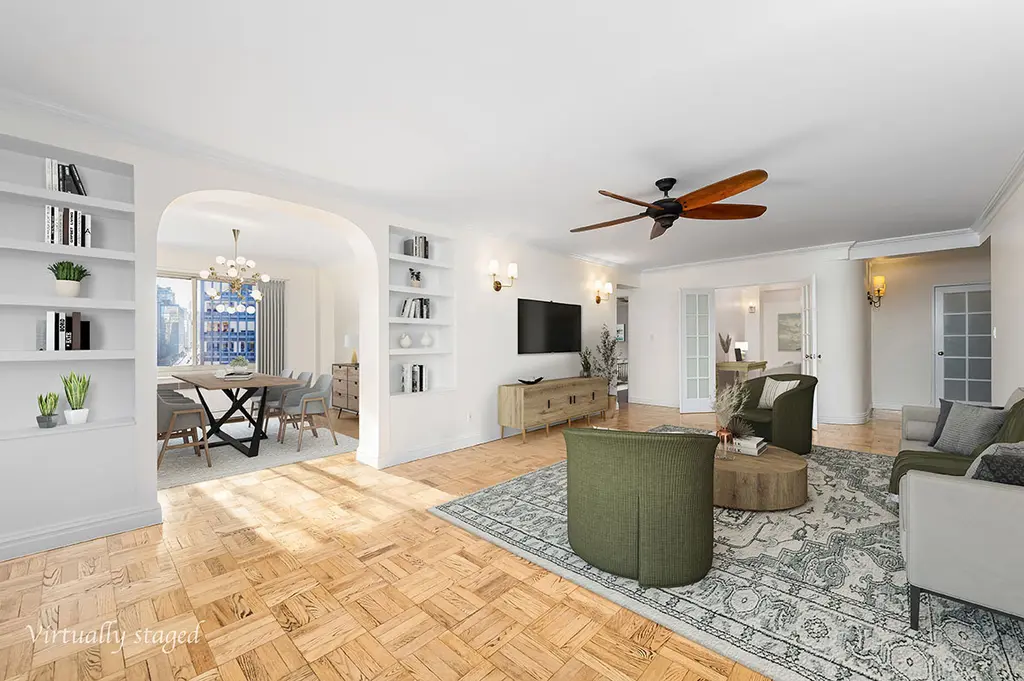
Turtle Bay House, #13D (Engel & Volkers New York Real Estate LLC)
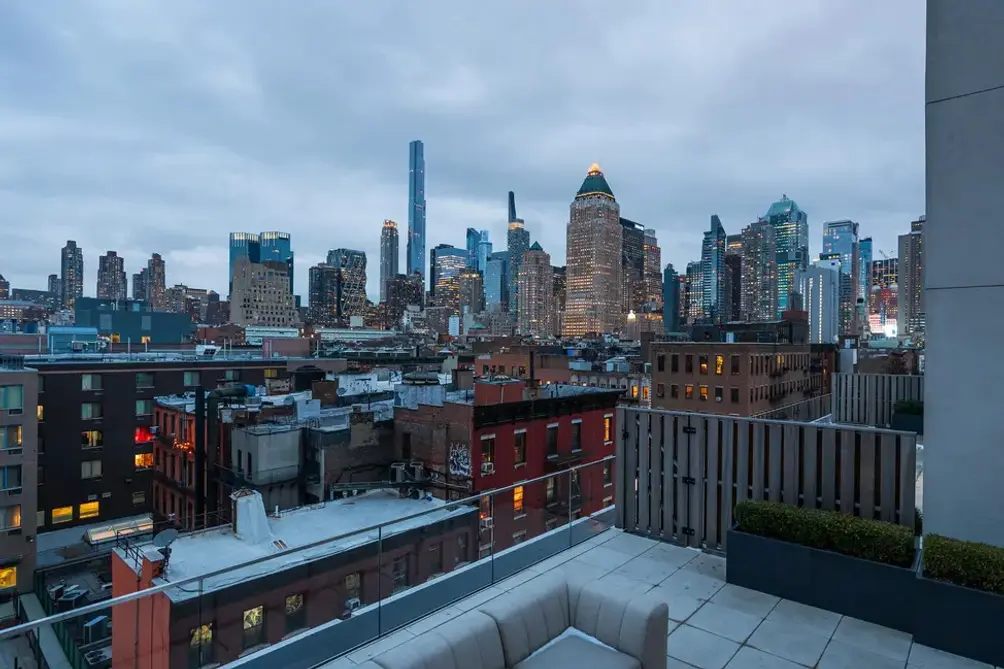 Views of Hell's Kitchen from Bloom on Forty Fifth (Keller Williams NYC)
Views of Hell's Kitchen from Bloom on Forty Fifth (Keller Williams NYC)
There are various theories on how this stretch of Midtown West got its name. Some trace it to one particular tenement on West 54th Street. Others think it came about from area gang activity and fetid industries, which created a less than welcoming atmosphere. One popular theory states that when someone described the place as hell during a riot, a policeman commented, “Hell’s a mild climate. This is hell’s kitchen.” What we know for sure is that the real estate industry has endeavored to rechristen the area “Clinton,” but the old name has stuck so well that locals don't want to let it go.
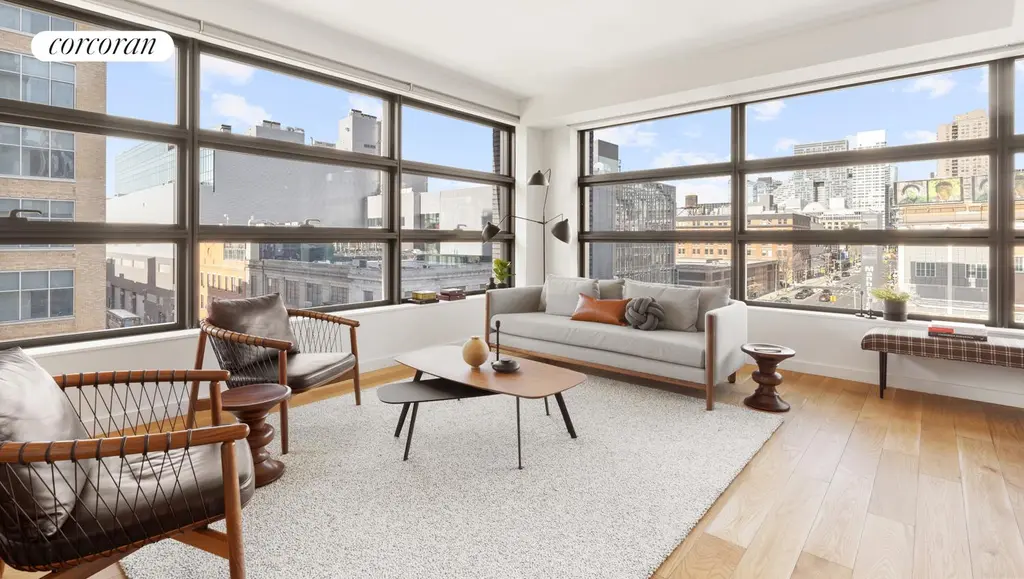
547 West 47th Street, #726 (Corcoran Sunshine Marketing Group)
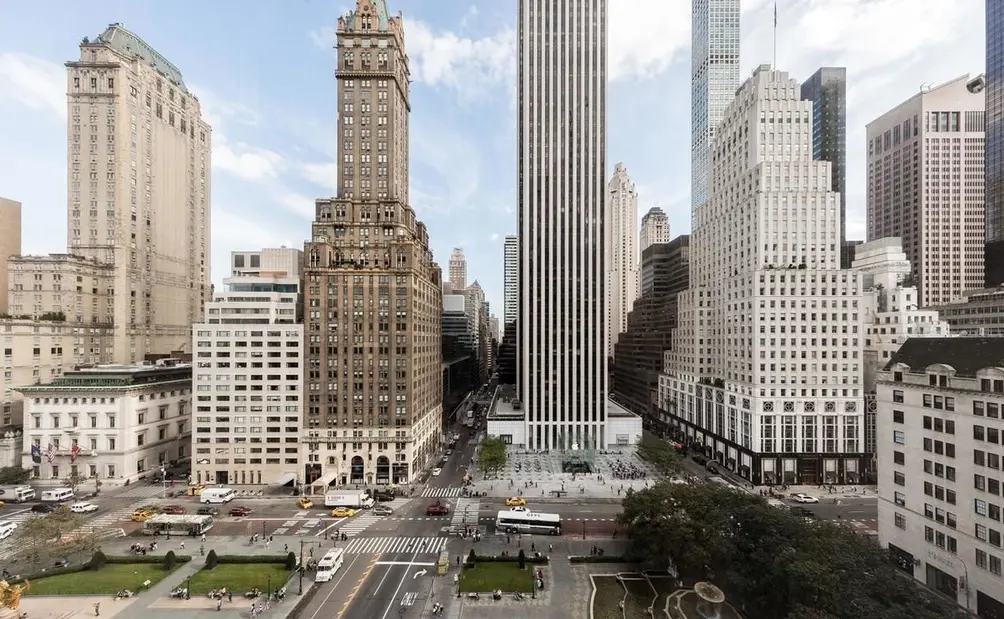 The Plaza District via Douglas Elliman
The Plaza District via Douglas Elliman
Located in a rarefied stretch of Midtown East, the Plaza District was named in honor of the world-famous hotel next to Central Park on Fifth Avenue and 59th Street. Boundary definitions differ, but brokerage firm Cushman & Wakefield has placed them from 47th Street to 65th Street, and from Seventh Avenue to the East River.
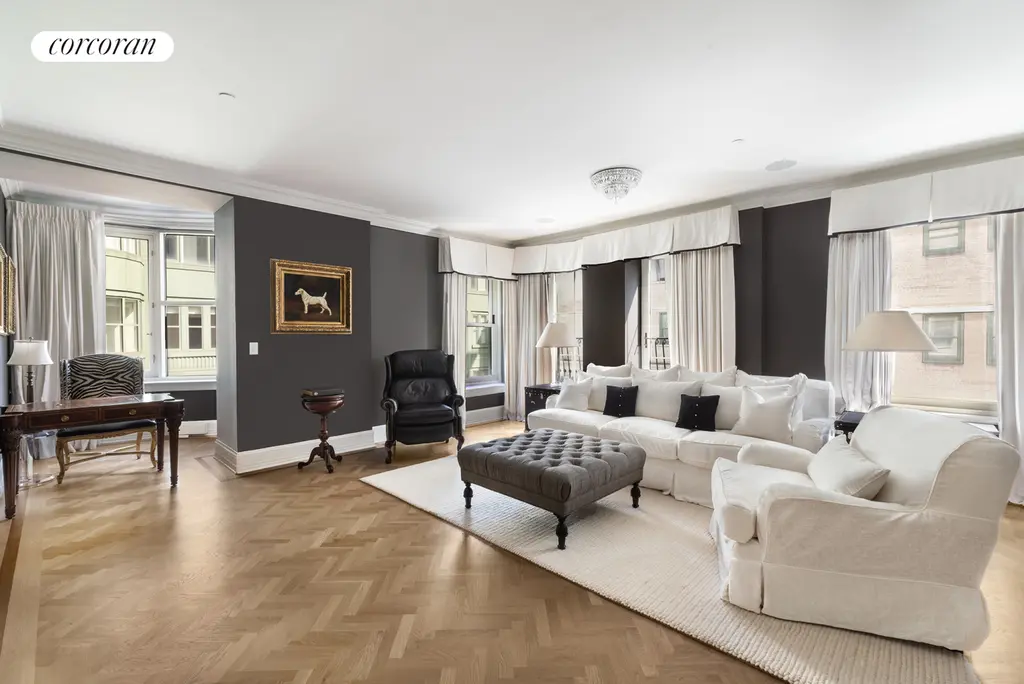
The Plaza, #PH2006 (Corcoran Group)
Between Bloomingdale's, a number of high-end restaurants and boutiques, the historic Lenox Hill Hospital, a residential building boom, and an abundance of new transportation options, it's hard to imagine Lenox Hill as being a quiet part of New York. And yet, in the early 19th century, what is now East 68th to 74th Streets between Park and Fifth Avenues was occupied by a 30-acre farm belonging to Robert Lenox, the namesake of the neighborhood to the east.
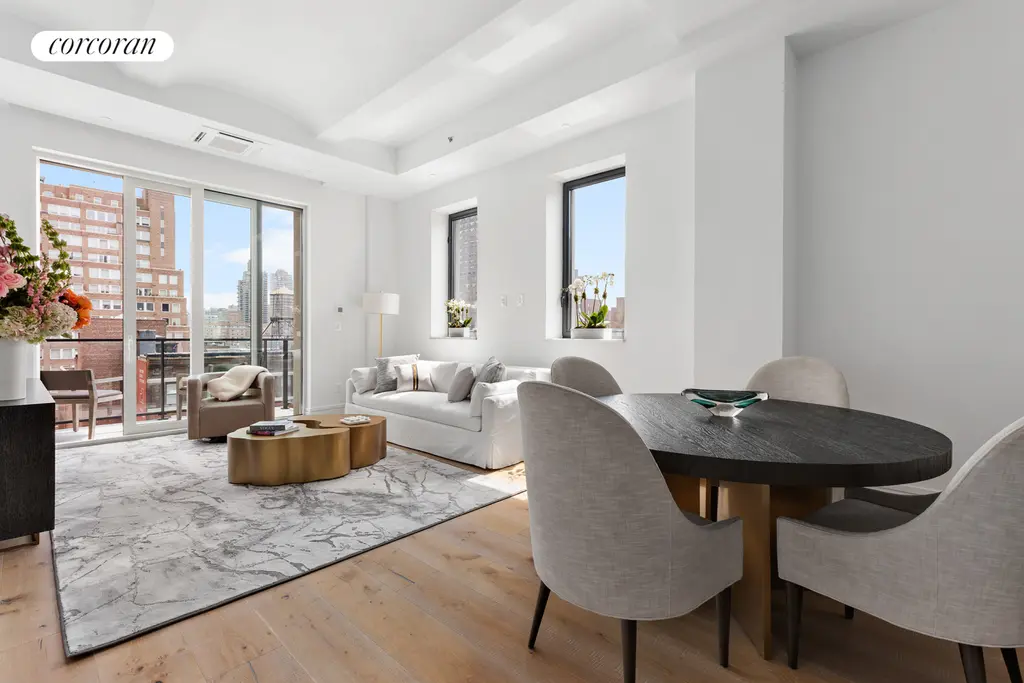
Archive Lofts, #PH4 (Corcoran Sunshine Marketing Group)
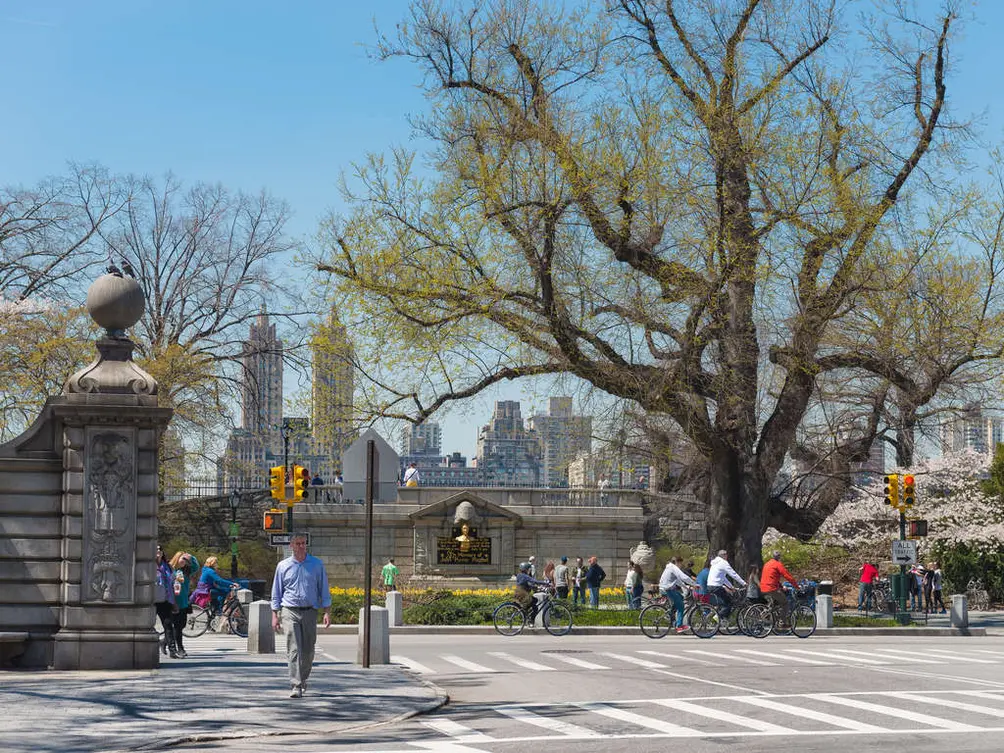
The section of the Upper East Side spanning from East 79th to 98th Streets was named in honor of steel magnate Andrew Carnegie's grand Gilded Age mansion at 2 East 91st Street (it is now the Cooper Hewitt, Smithsonian Design Museum). Indeed, this part of New York was best known for its lavish mansions during this time. More than 100 years later, as some speculate that we might be in the midst of a second Gilded Age, the area is undergoing a building boomlet comprising luxurious new condos inspired by prewar architecture.
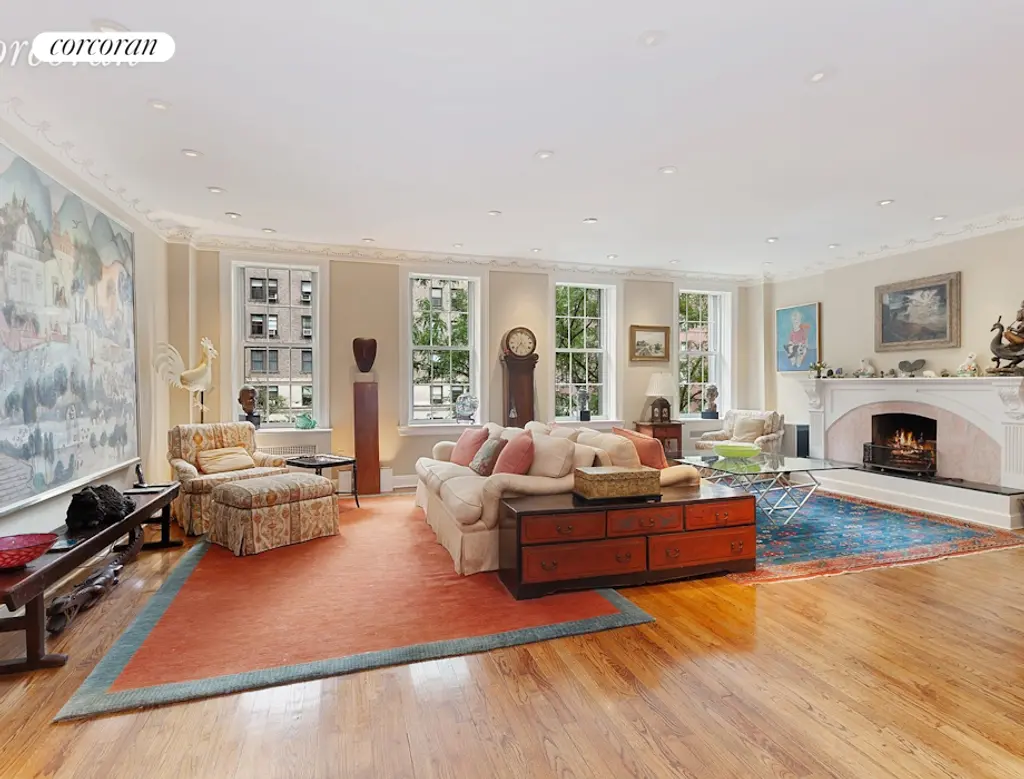
1082 Park Avenue, #3 (Corcoran Group)
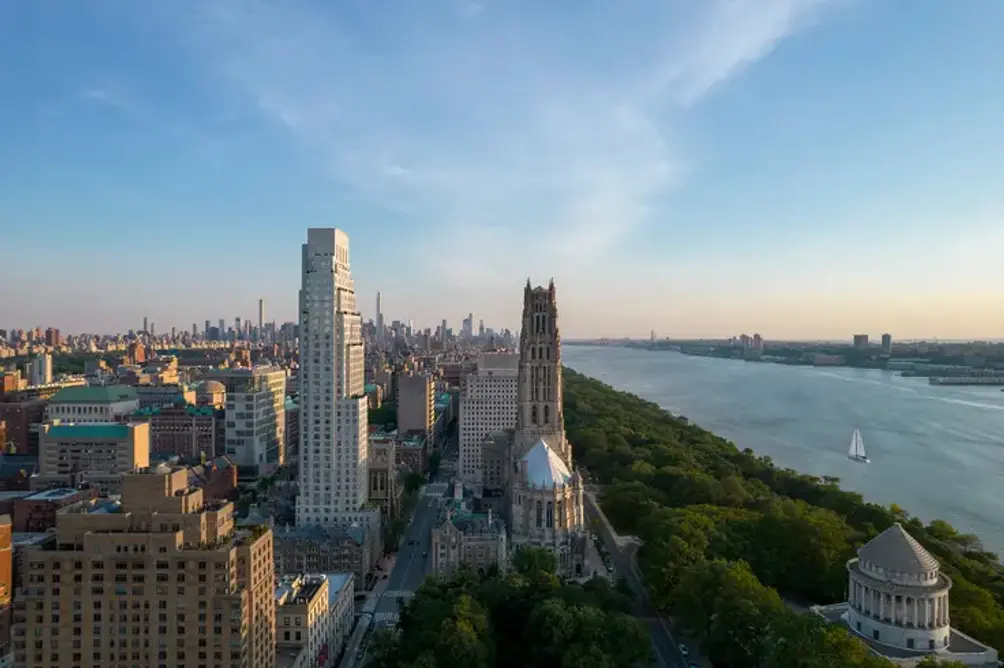
When settlers first came to this stretch of what is now the Upper West Side, it was dubbed Vandewater Heights in honor of Dutch landowner Hermon Vandewater. Hundreds of years later, as institutions like Columbia University, Teacher's College, the Cathedral of Saint John the Divine, and St. Luke's Hospital bought property throughout the area, a debate sprang up about whether to call this emergent neighborhood "Morningside Heights" or "Cathedral Heights." Use of the former would eventually win out among locals, and even Team Cathedral Heights must concede that this name flows off the tongue better than "The Acropolis of the New World," as some 19th-century scholars dubbed it.
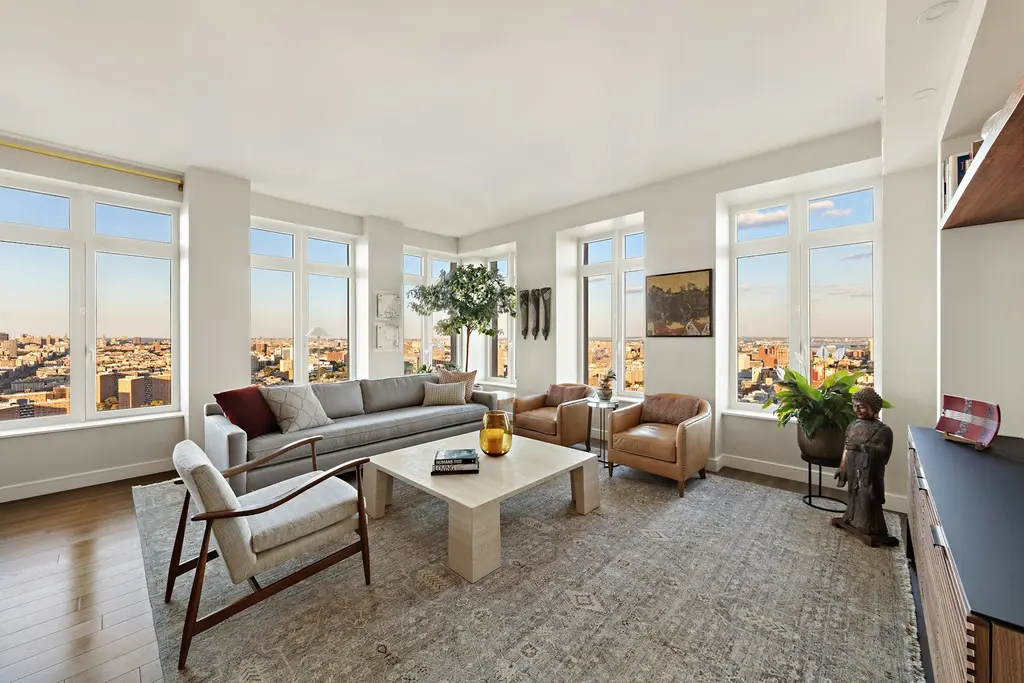
Vandewater, #PH32A (Brown Harris Stevens Development Marketing LLC)
In 1658, the settlement of Nieuw Haarlem was founded by Peter Stuyvesant, Director-General of what was then the colony of New Netherland. The English would later name the colony New York after capturing it from the Dutch, yet this neighborhood's name was left largely unchanged. The British burned the neighborhood to the ground during the Revolutionary War, but it has come back in leaps and bounds, and is considered by some to be experiencing another Harlem Renaissance.
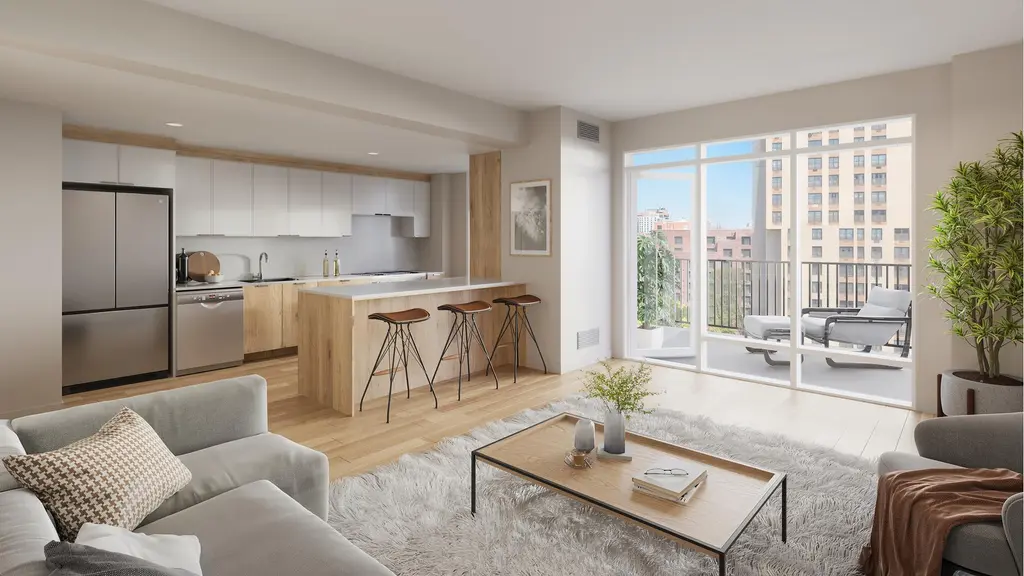
Patagonia, #11B (Douglas Elliman Real Estate)
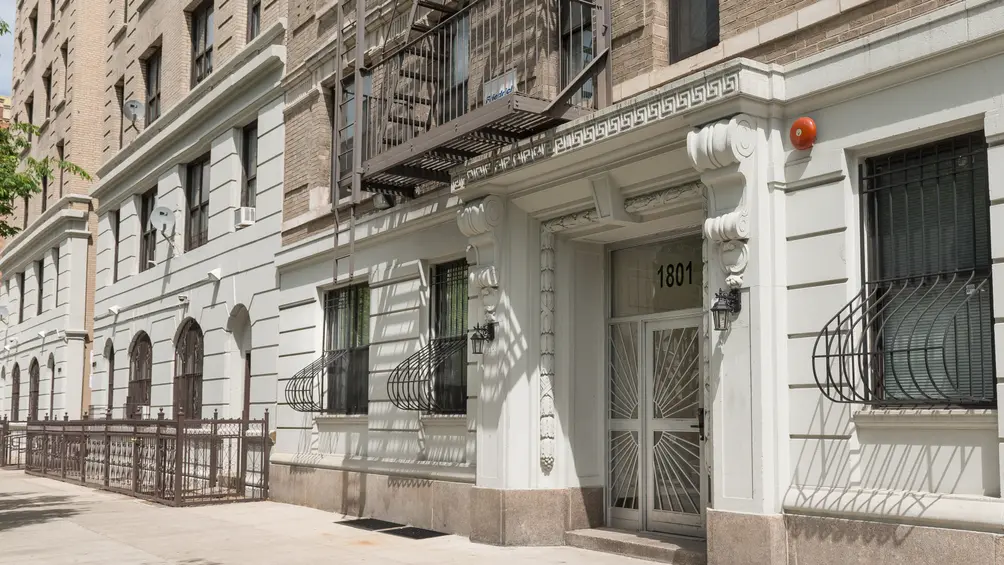 (CityRealty)
(CityRealty)
This now-bustling stretch of Upper Manhattan was once a quiet area of mansions and estates, which was probably a factor in Founding Father Alexander Hamilton choosing it as a setting for The Grange, his Federal-style mansion. The extension of the subway line at the end of the 19th century ushered in a flurry of new housing, and a certain musical was probably instrumental in bringing it to the attention of today’s buyers.
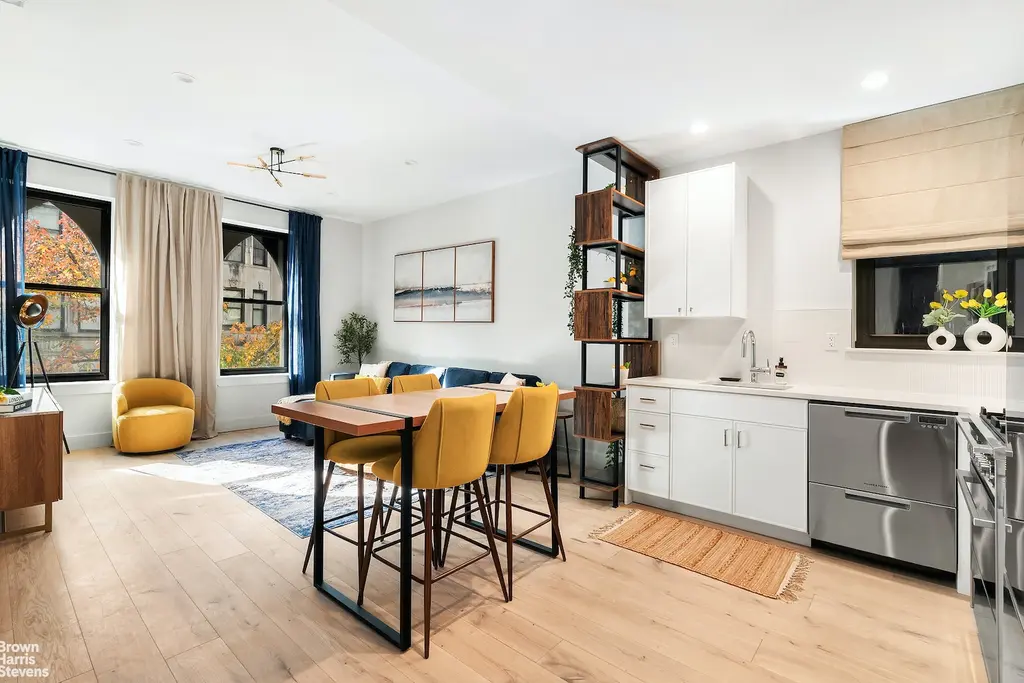
463 West 142nd Street, #2A (Brown Harris Stevens Residential Sales LLC)
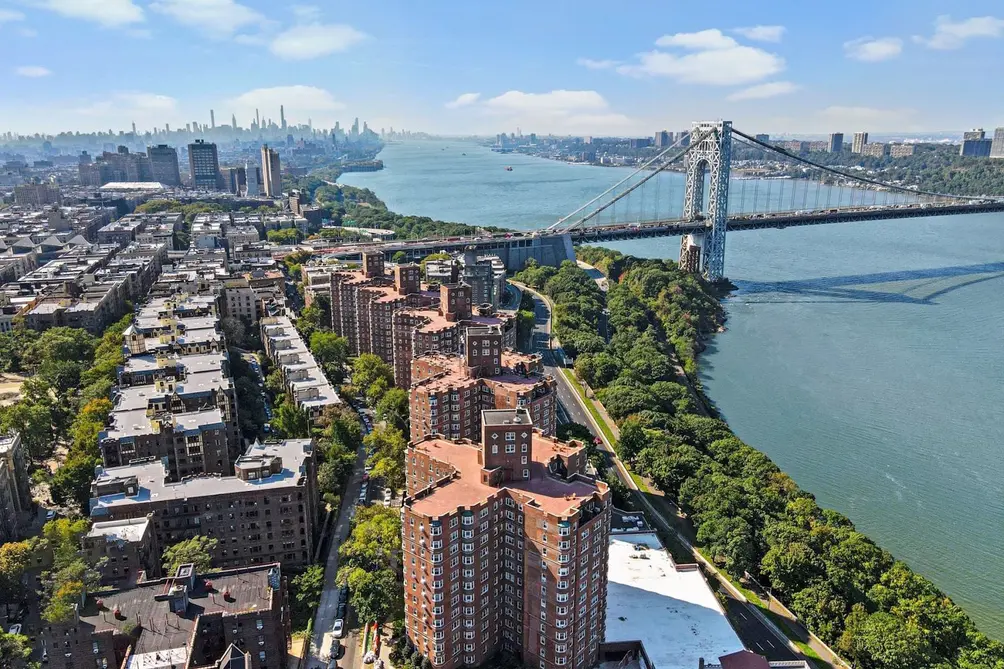 Washington Heights (CityRealty)
Washington Heights (CityRealty)
During the Revolutionary War, George Washington’s fort was built on the highest point of Manhattan, and the hilly terrain inspired the “heights” part of the name. Thanks to another Tony Award-winning musical, it is simply known as “the Heights” to some.
The River Arts, #2E
$975,000 (-2.4%)
Washington Heights | Cooperative | 2 Bedrooms, 2 Baths | 1,270 ft2
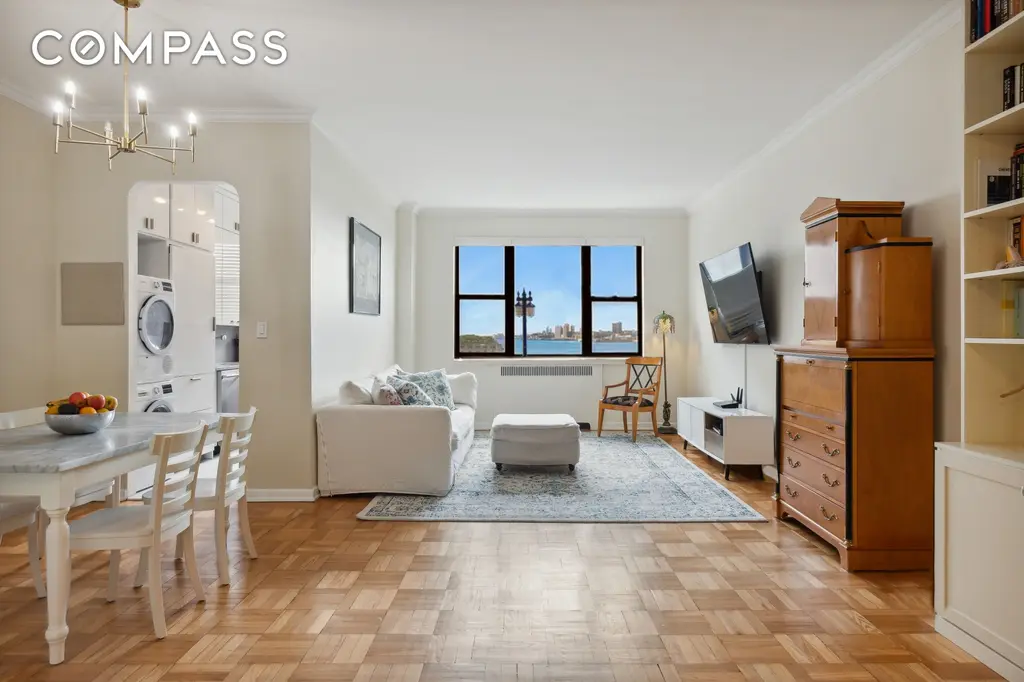
The River Arts, #2E (Compass)
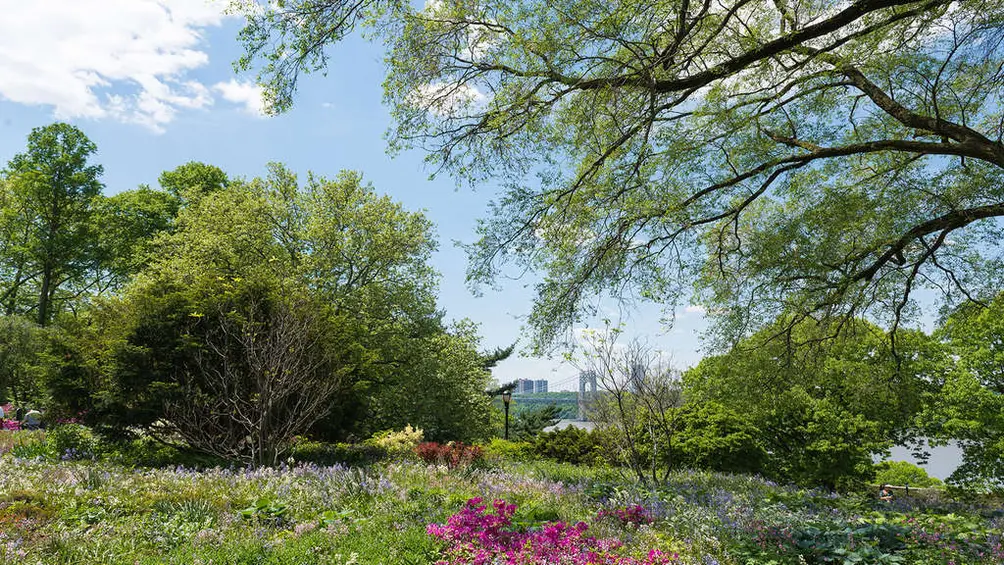 Inwood via CityRealty
Inwood via CityRealty
A recent rezoning has attracted attention to Inwood beyond Upper Manhattan, but the name was bestowed on the neighborhood in 1864, years after the Hudson River Railroad breathed new life into what was once a sleepy fishing village. Some would have preferred the name "Kingsbridge Heights," but all agreed that "Tubby Hook," as it was previously known because of the tub-like outline of an inlet, wasn't going to cut it in this new age.
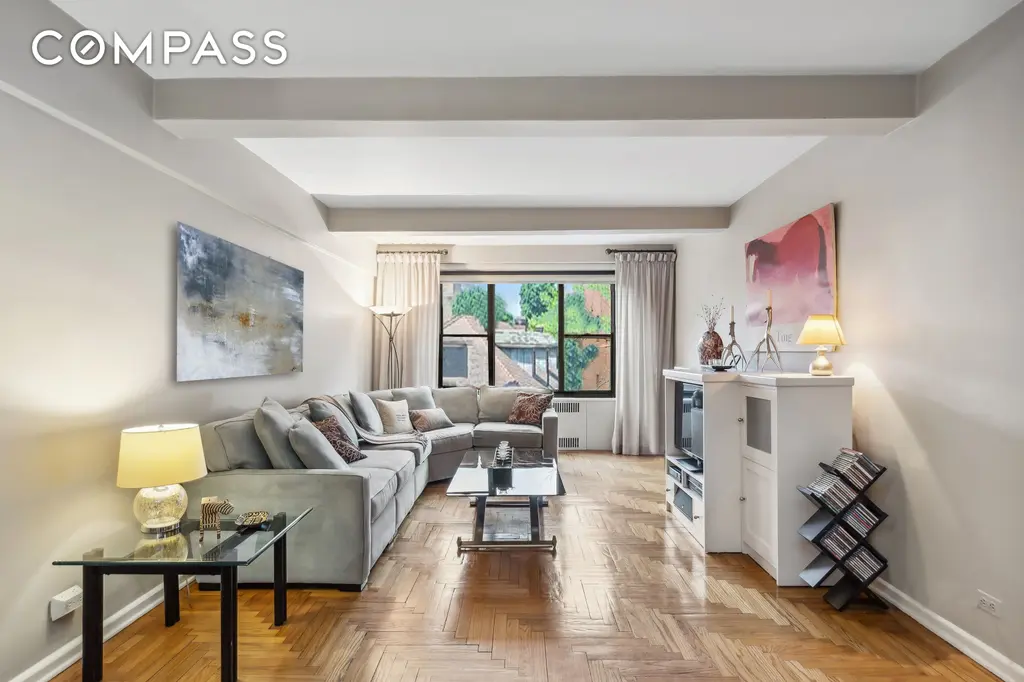
57 Park Terrace East, #B40 (Compass)
Brooklyn
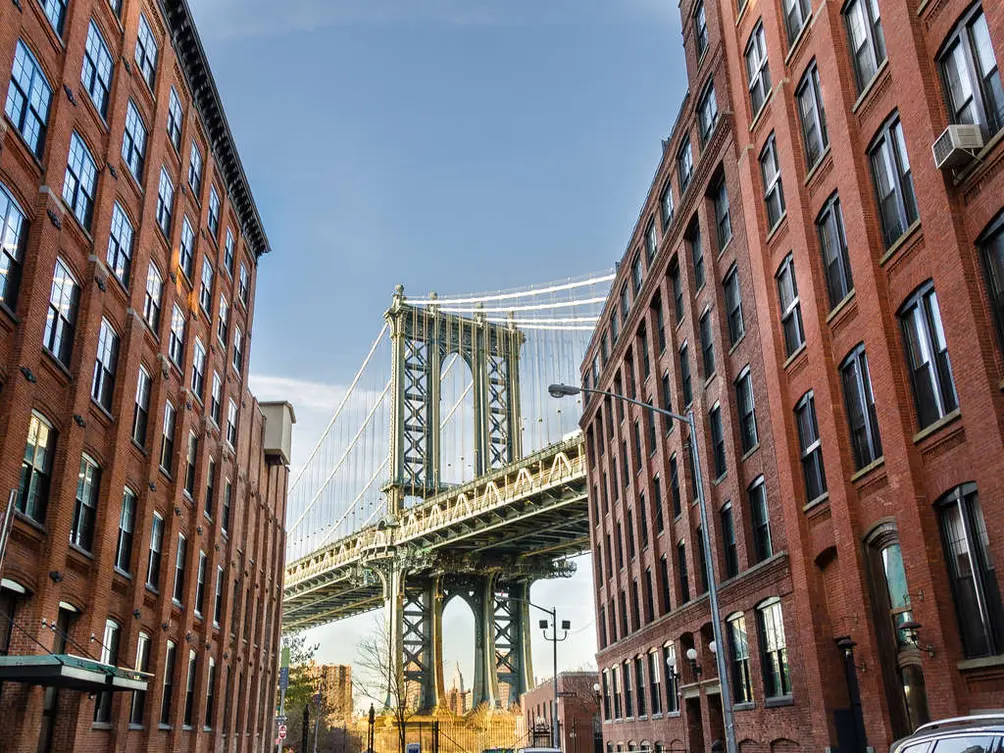 DUMBO via CityRealty
DUMBO via CityRealty
Before the acronym for Down Under the Manhattan Bridge Overpass was coined, the neighborhood between the Brooklyn and Manhattan Bridges was known as Olympia (a name dating back to the late 18th century) or considered to be part of Vinegar Hill. However, as artists moved into the abandoned industrial buildings along the waterfront, a new name took hold and the area made the transition to residential. Jerry Seinfeld has quipped that the overpass got added to the acronym because no one wanted to live in a neighborhood called DUMB.
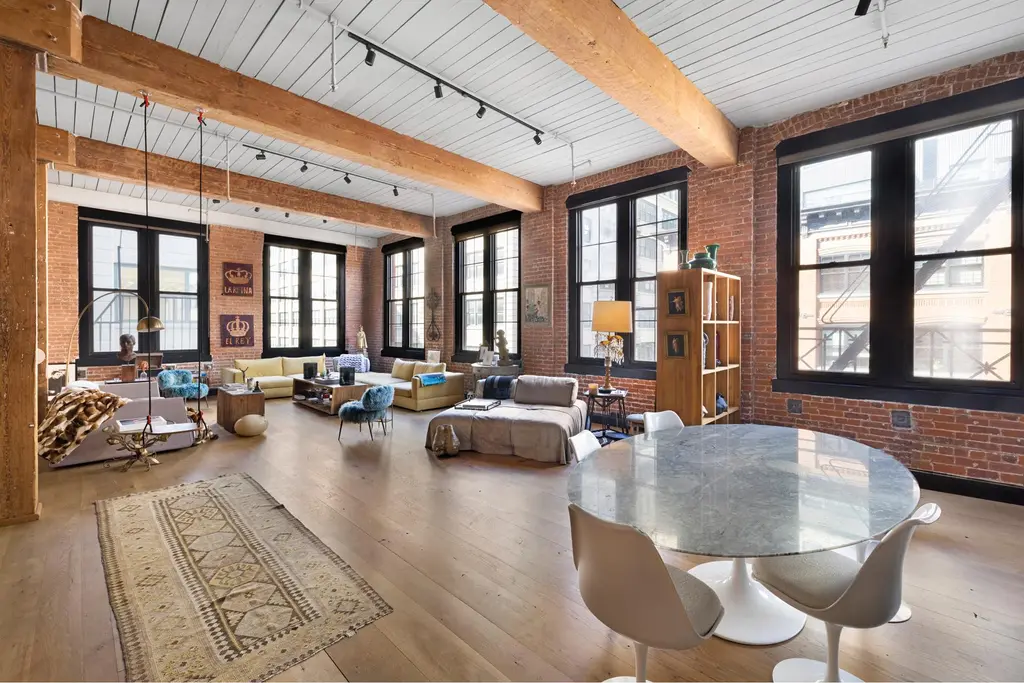
31 Washington Street, #11 (Douglas Elliman Real Estate)
Would you like to tour any of these properties?
Just complete the info below.
Or call us at (212) 755-5544
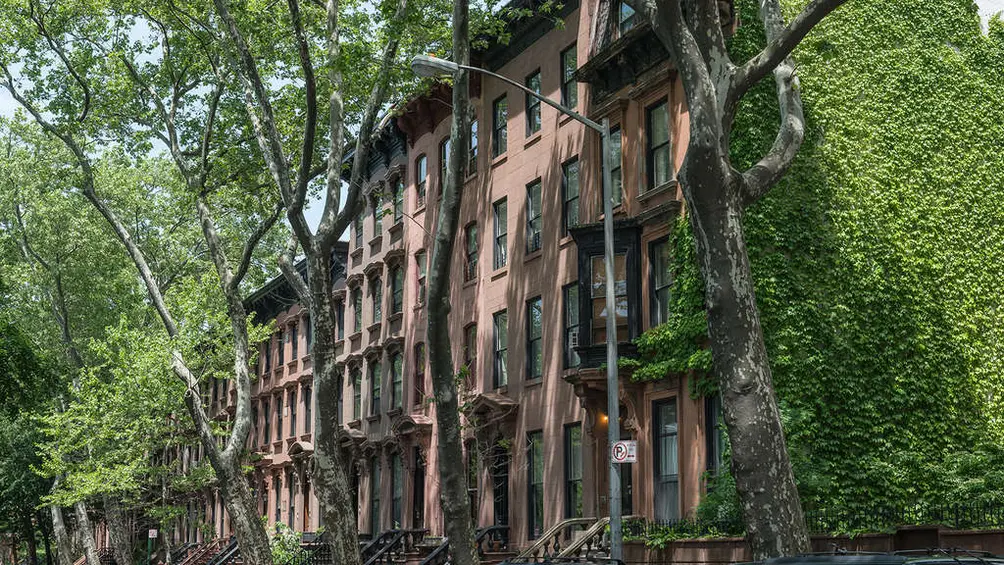 Fort Greene via CityRealty
Fort Greene via CityRealty
Fort Greene is now home to some of Brooklyn's most attractive architecture and green space, but it was home to a simple earthen fort during the Battle of Long Island during the Revolutionary War. It was constructed by Nathaneal Greene, a Major General in the Continental Army and one of George Washington's most trusted officers.
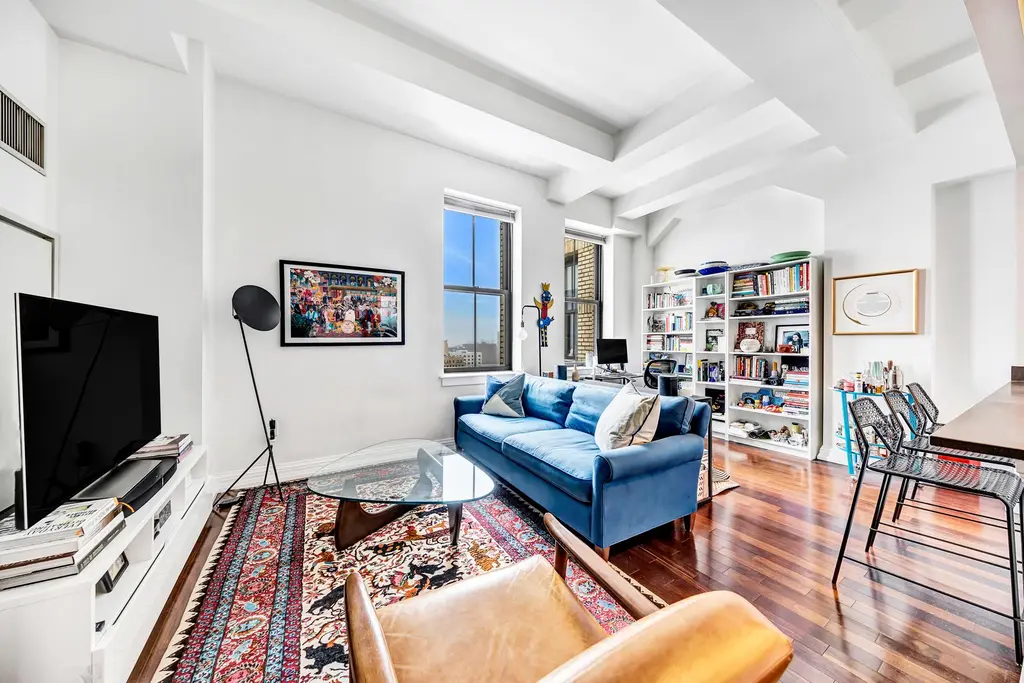
One Hanson Place, #17A (Douglas Elliman Real Estate)
Brooklyn has experienced quite a renaissance in recent years, but investors have always embraced the borough's potential. Exhibit A: In 1802, real estate investor Richard Woodhull purchased a stretch of a farming village known as Bushwick Shores and named it Williamsburgh, in honor of its surveyor Jonathan Williams. However, we doubt even these optimists could have foreseen its eventual transformation in to the art, dining, and residential destination it has become today.
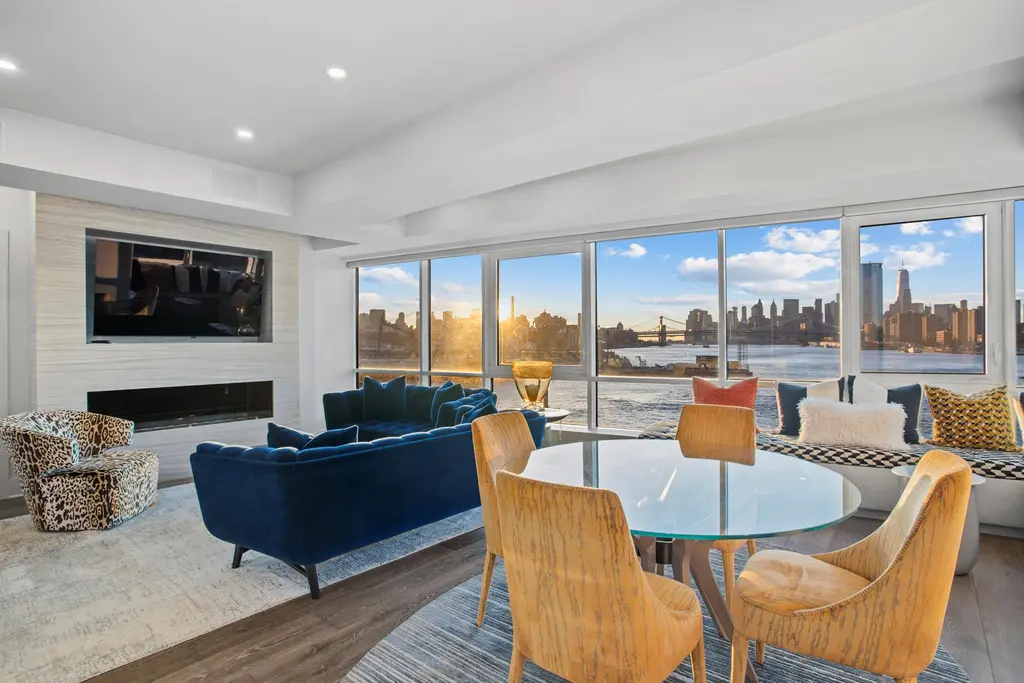
Schaefer Landing North, #4B (Douglas Elliman Real Estate)
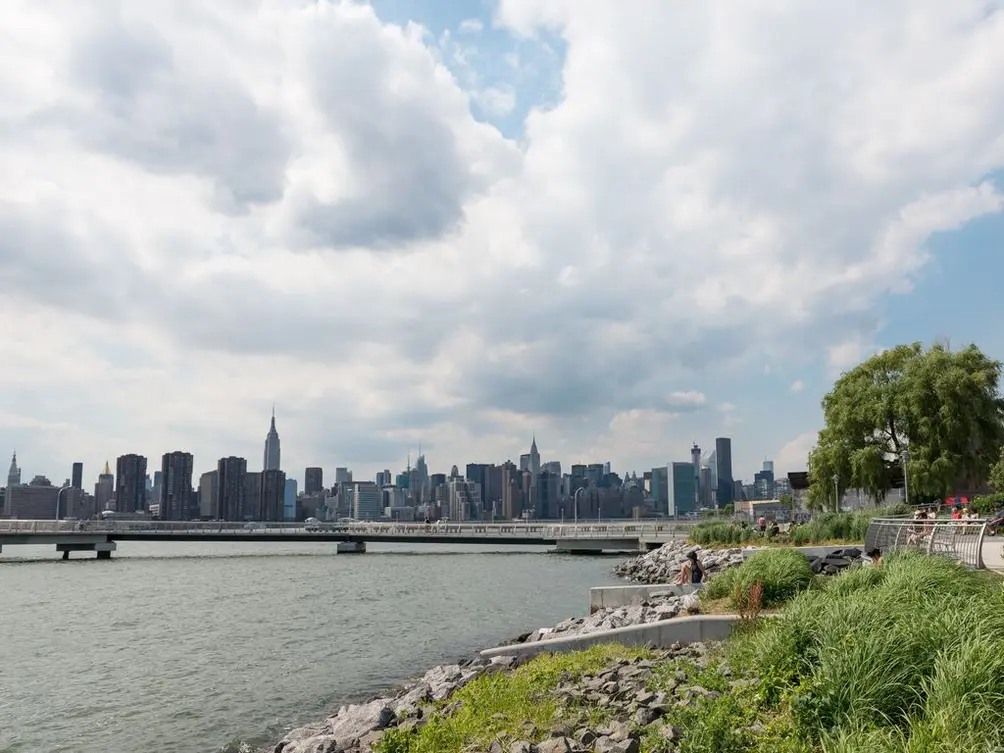
In Brooklyn's northernmost neighborhood, the name "Greenpoint" originally referred only to one bluff on Freeman Street that jutted into the East River. However, as the neighborhood's population grew beyond the five families that lived there around the Revolutionary War, the area surrounding the bluff came to be known as Greenpoint.
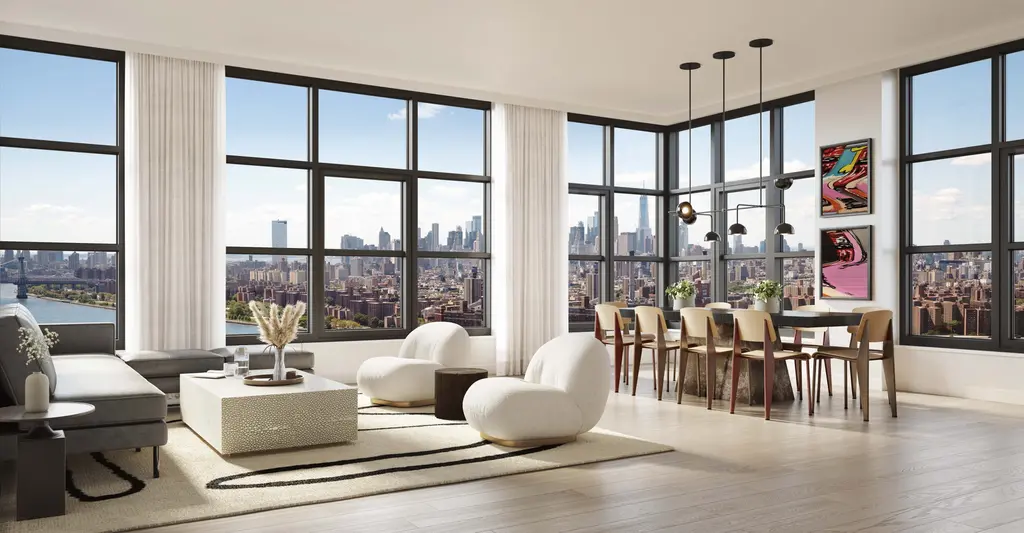
The Huron, #10EE (Serhant LLC)
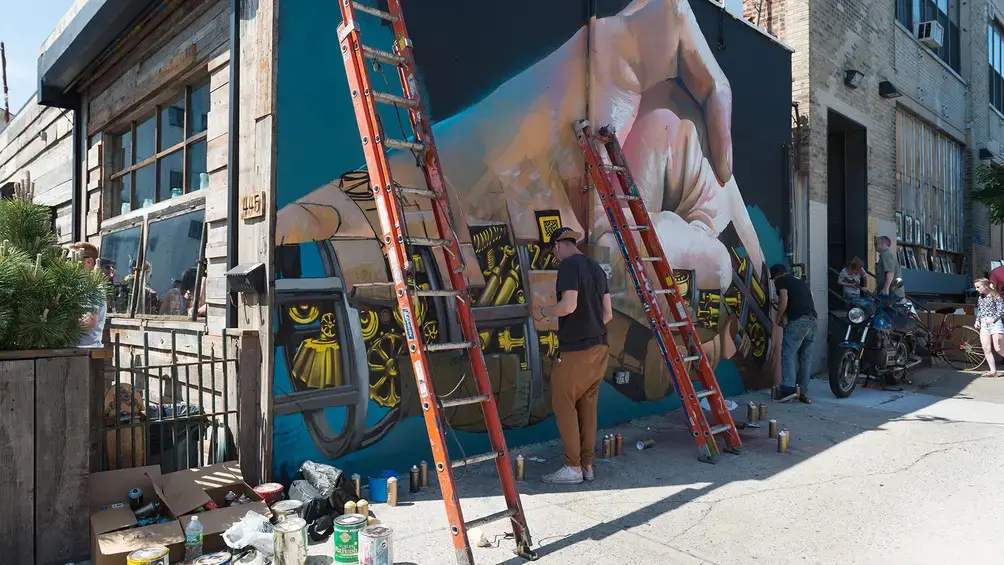 Bushwick (CityRealty)
Bushwick (CityRealty)
Bushwick is the anglicized version of Boswjick, the Dutch name for “town in the woods” that Governor General Peter Stuyvesant gave the area. Today, between its nightlife and art scenes, appearances in pop culture, and abundant residential development, it is hard to believe that this section of Brooklyn was ever a woodland.
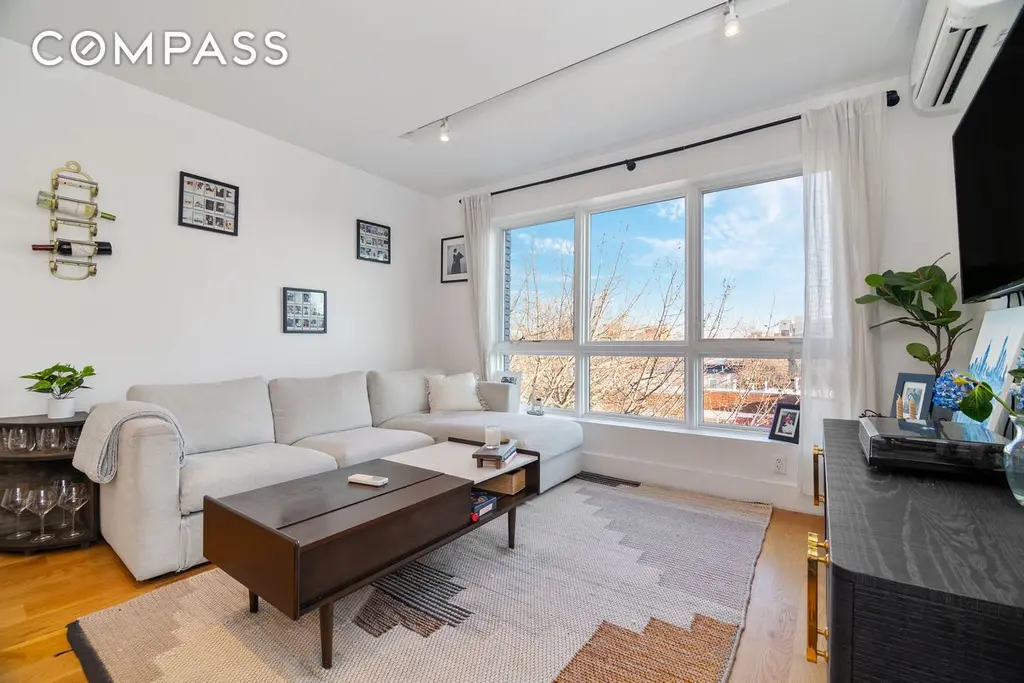
1249 Dekalb Avenue, #4F (Compass)
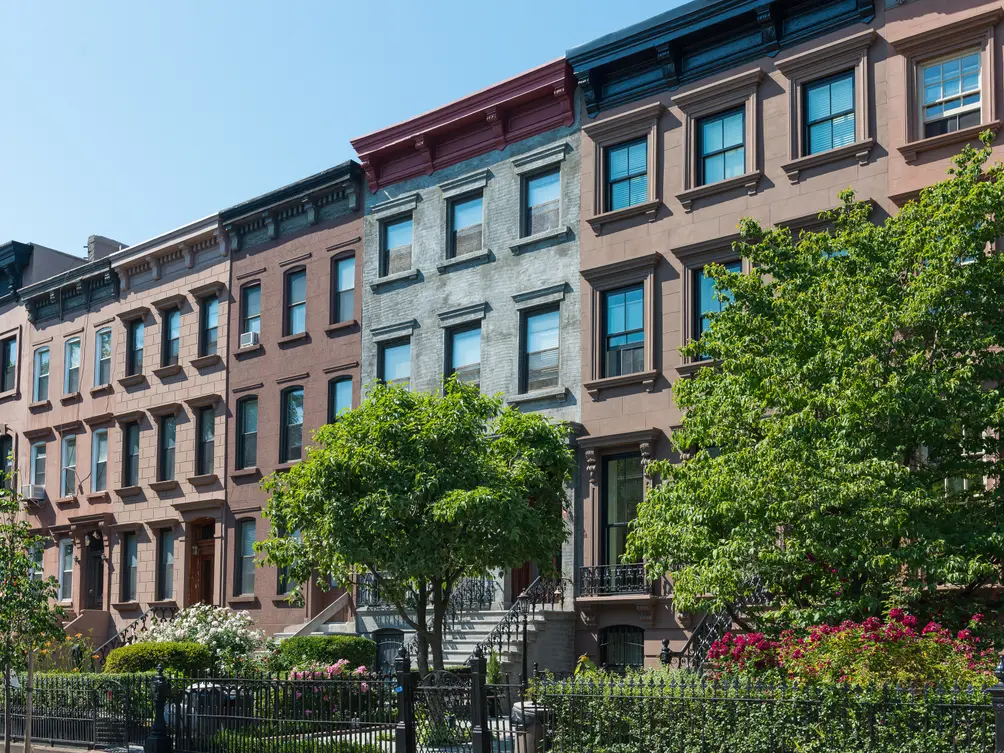 (CityRealty)
(CityRealty)
Contrary to what Hamilton Heights and Washington Heights (see above) would make some think, Upper Manhattan does not have a monopoly on Revolutionary War heroes. Charles Carroll, a signer of the Declaration of Independence, led a regiment that tried to regain a strategically placed farmhouse near what is now Gowanus Canal. The assault failed, but Mr. Carroll was not forgotten: Later centuries would see a South Brooklyn street named after him, then a park, and then an entire neighborhood.
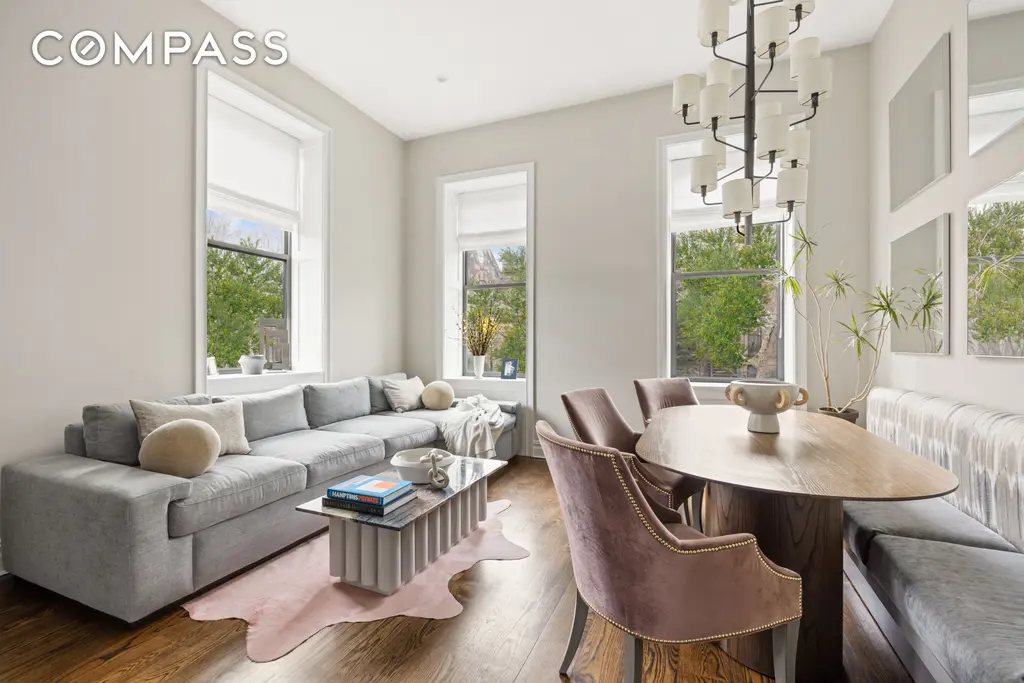
50 1st Place, #2 (Compass)
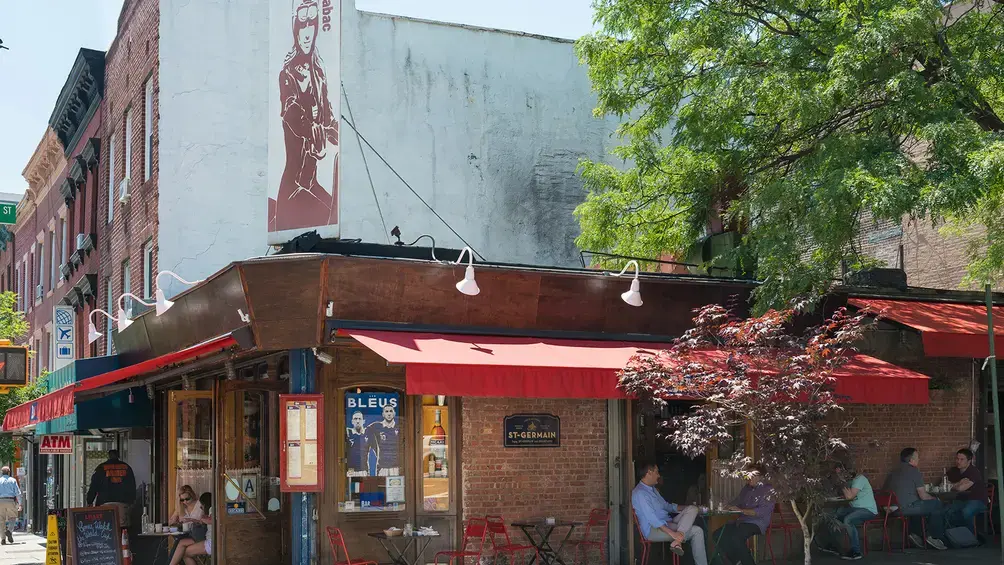
Much of this Brooklyn neighborhood is located within the boundaries on the Cobble Hill Historic District, which in turn was named for the cobblestones that line the streets and were used to stabilize ships. Hundreds of years later, this has proved a more melodious name for the area than the original Ponkiesbergh.
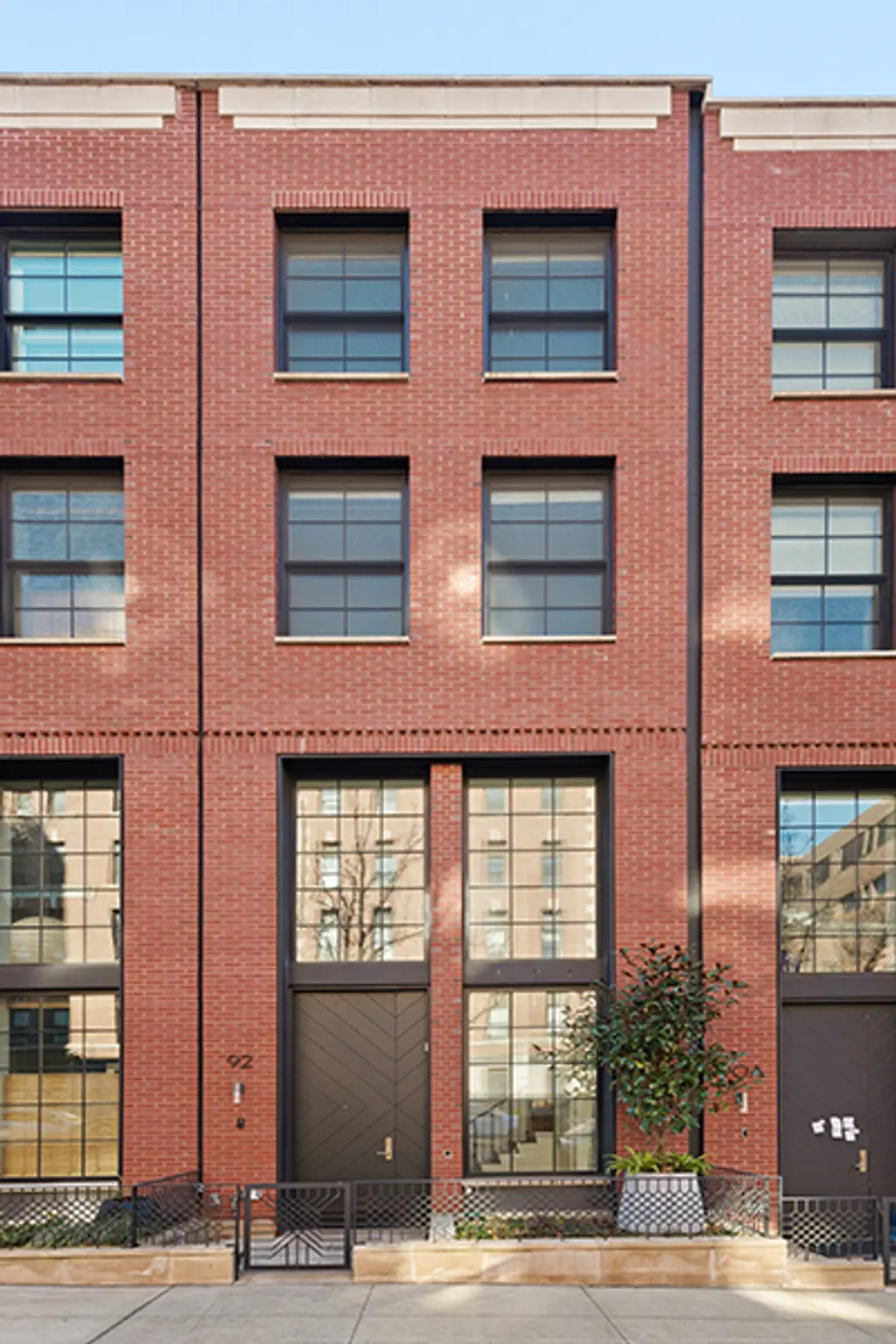
Polhemus Townhouses, # (Serhant LLC)
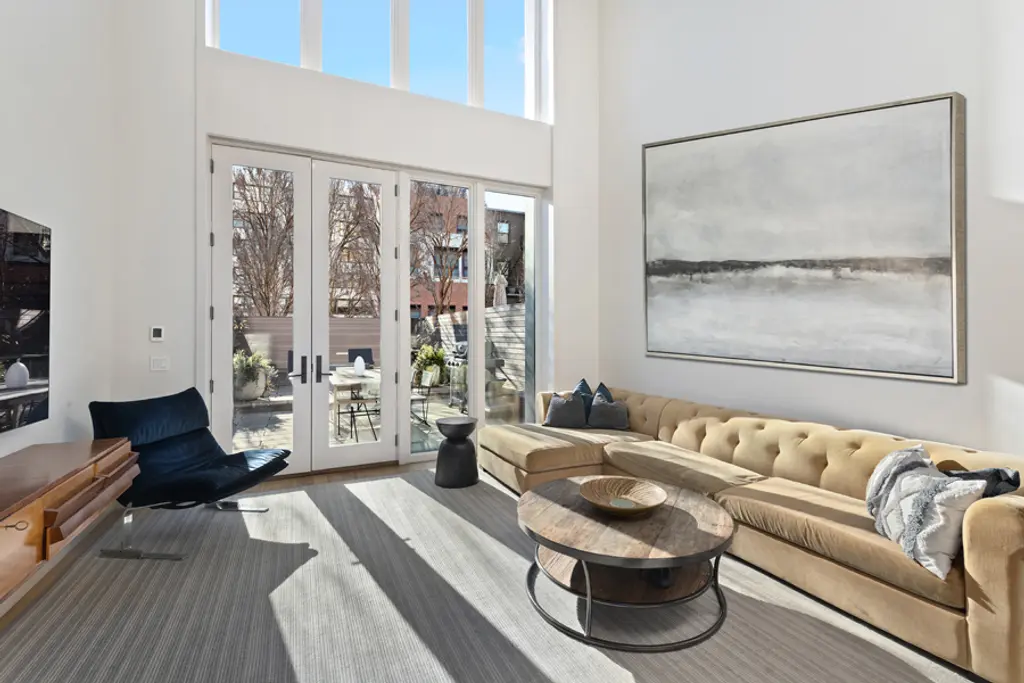
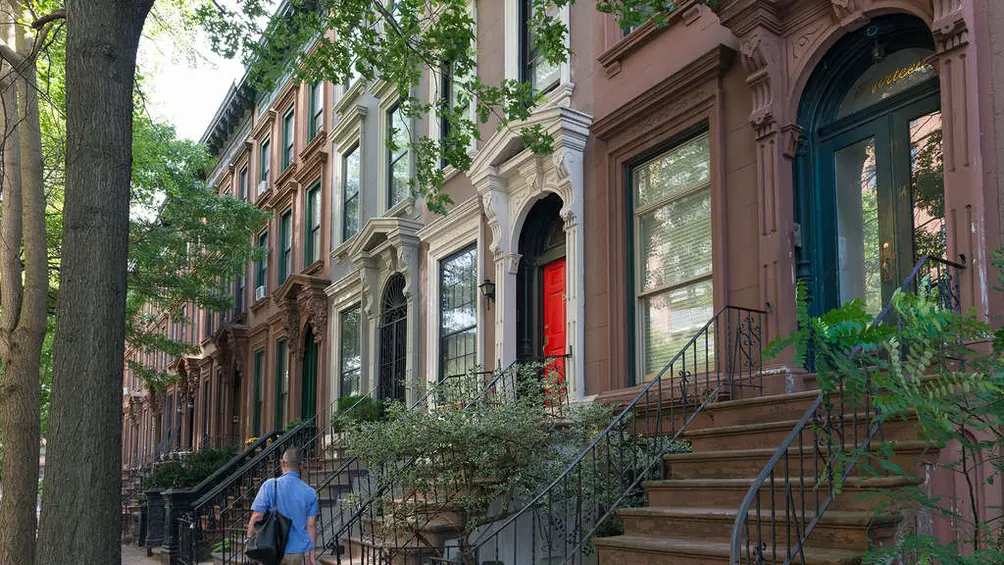 Clinton Hill brownstones via CityRealty
Clinton Hill brownstones via CityRealty
Clinton Hill is named in honor of DeWitt Clinton, who served as mayor of New York City, a state senator, and a two-term governor of New York. The “hill” part of the name is self-explanatory to residents - the area has an elevation of 95 feet!
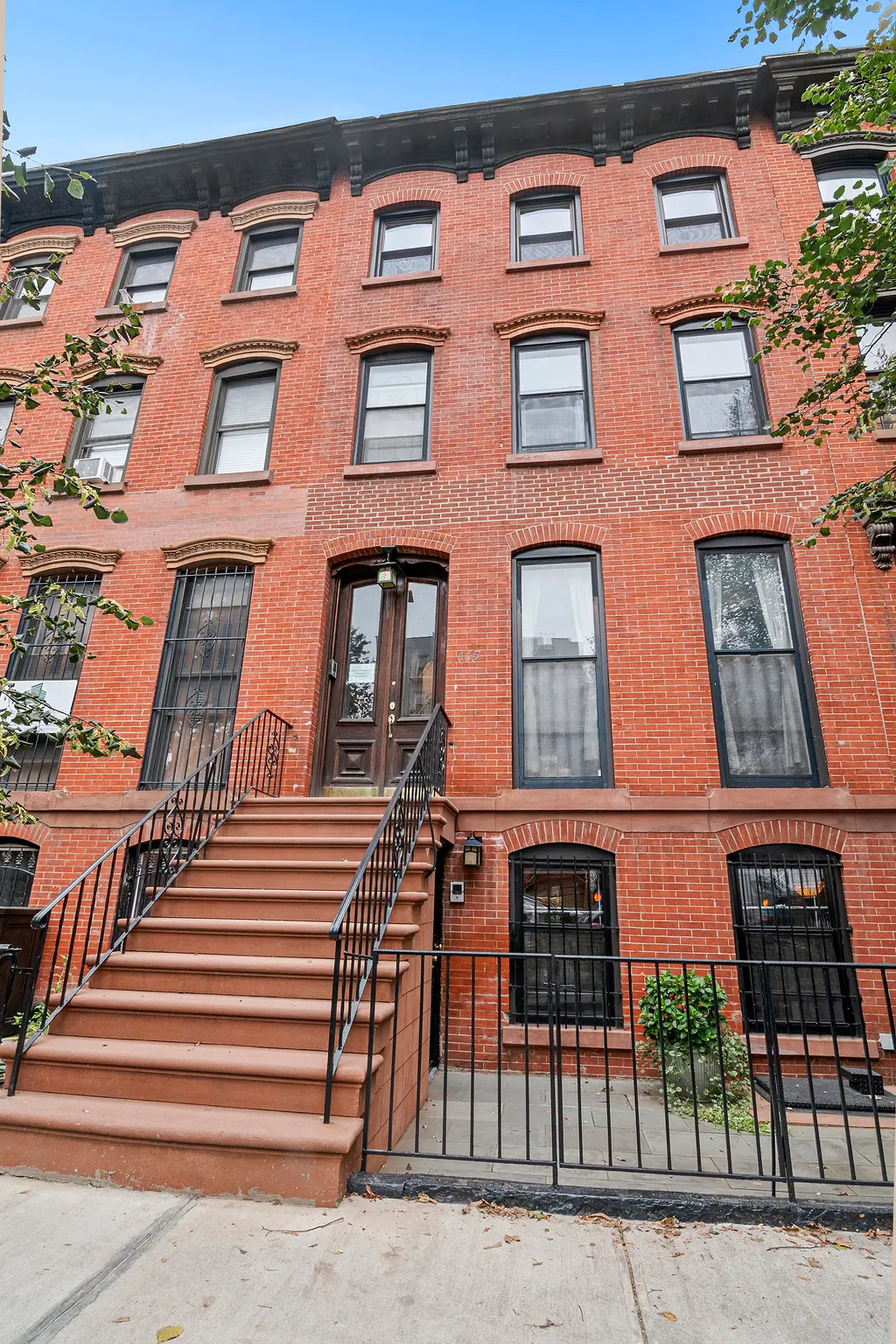
445 Waverly Avenue, #NA (Corcoran Group)
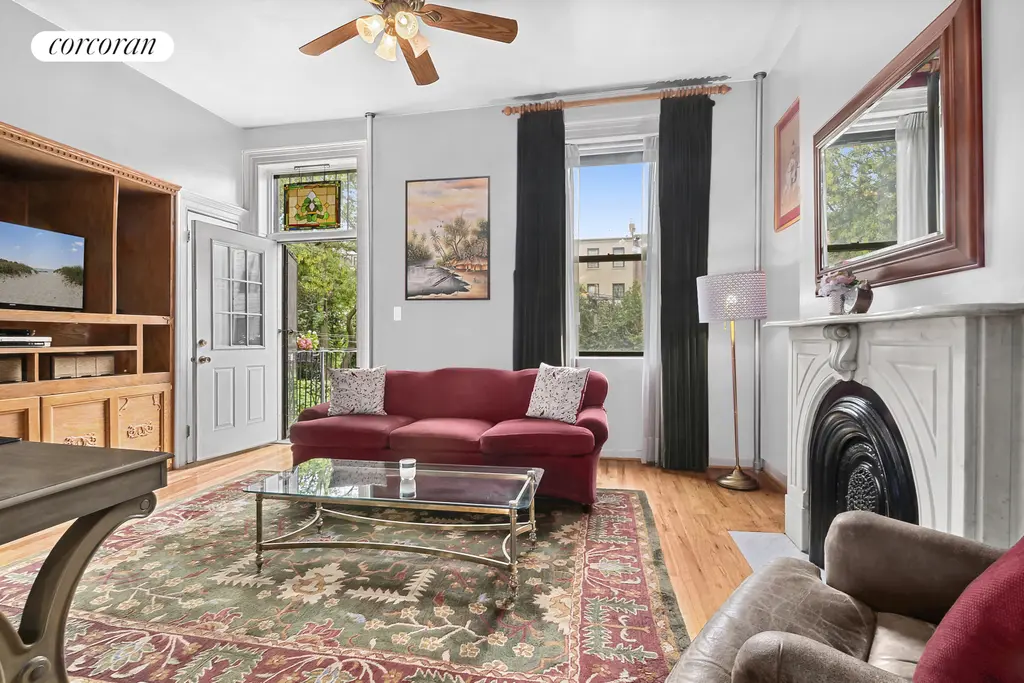
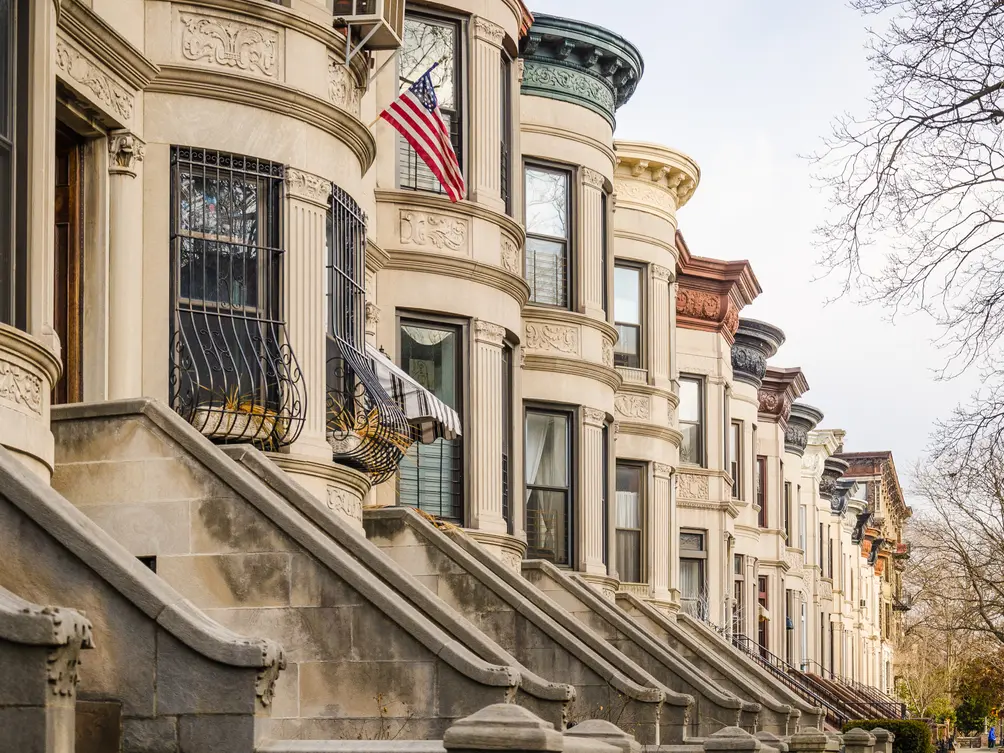 Park Slope via Douglas Elliman
Park Slope via Douglas Elliman
Prospect Park is instrumental in Park Slope's designation as one of New York's family-friendliest places, and it played an equally strong role in the naming of the neighborhood. The "slope" comes from the noticeable uphill when travelling from nearby Gowanus Canal to Prospect Park.
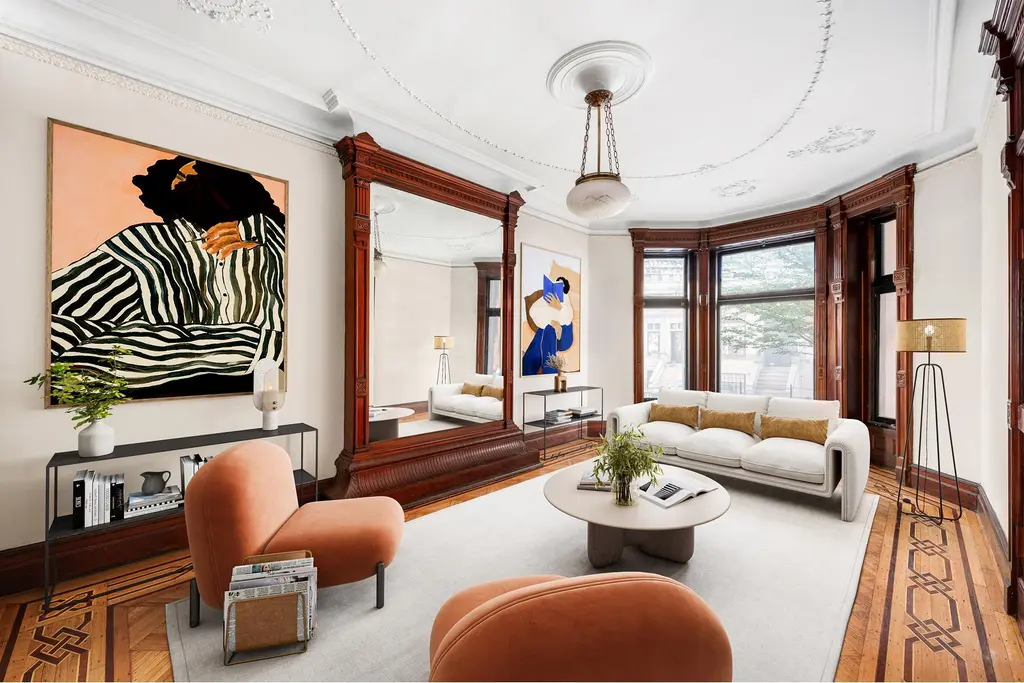
853 Carroll Street, #1 (Douglas Elliman Real Estate)
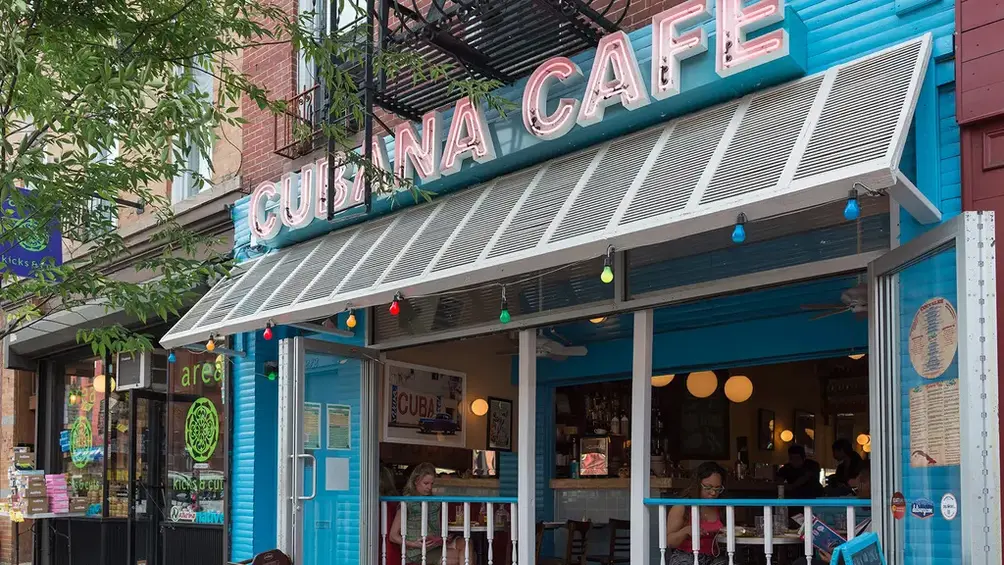 Gowanus (CityRealty)
Gowanus (CityRealty)
Before it became known for its Superfund site, rezoning, and home of extended 421-a benefits, Gowanus was an industrial shipping center. Brownstoner has two theories for how it got its name: either in honor of Native American chief Gouwane (translated loosely as “the sleeper”), or gouwee, the Dutch word for “bay.”
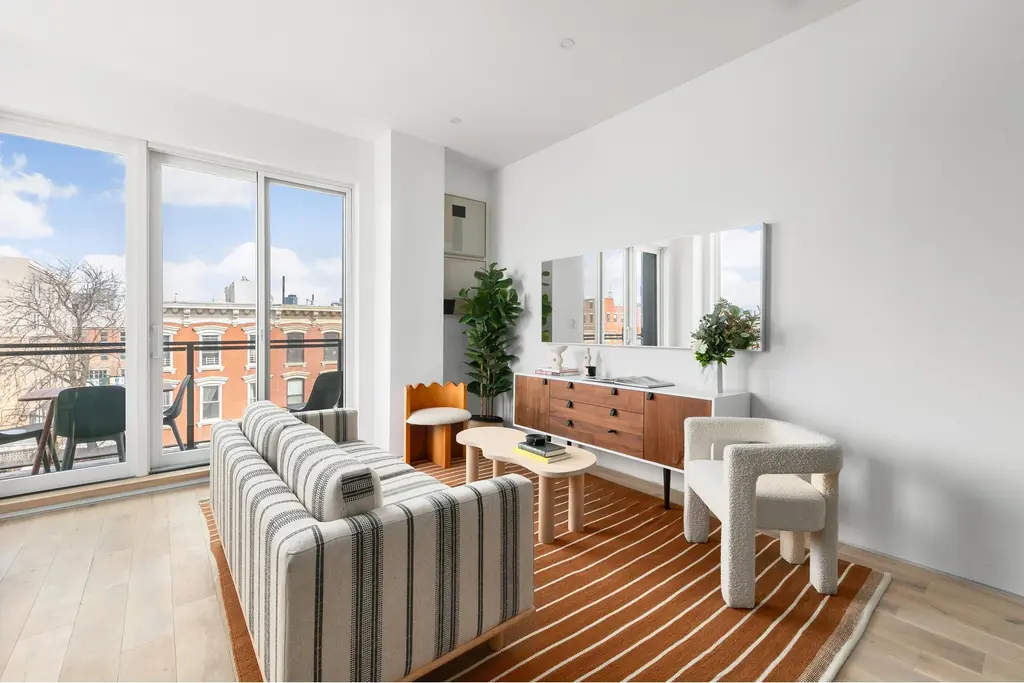
The Genesis, #3B (Douglas Elliman Real Estate)
Purchased from its indigenous inhabitants in the 17th century, this sprawling, hilly section of Brooklyn was originally known as "Crow Hill" in reference to the numerous black birds that roosted at the area's highest peak. When Crown Street was extended in 1916, the name "Crown Heights" was adopted. Mentalfloss muses on why they didn't make an easier change with "Crown Hill," but the neighborhood's residents don't seem to object.
984 Bergen Street, #RESIDENCE3
$1,350,000
Crown Heights | Condominium | 2 Bedrooms, 2 Baths | 1,093 ft2
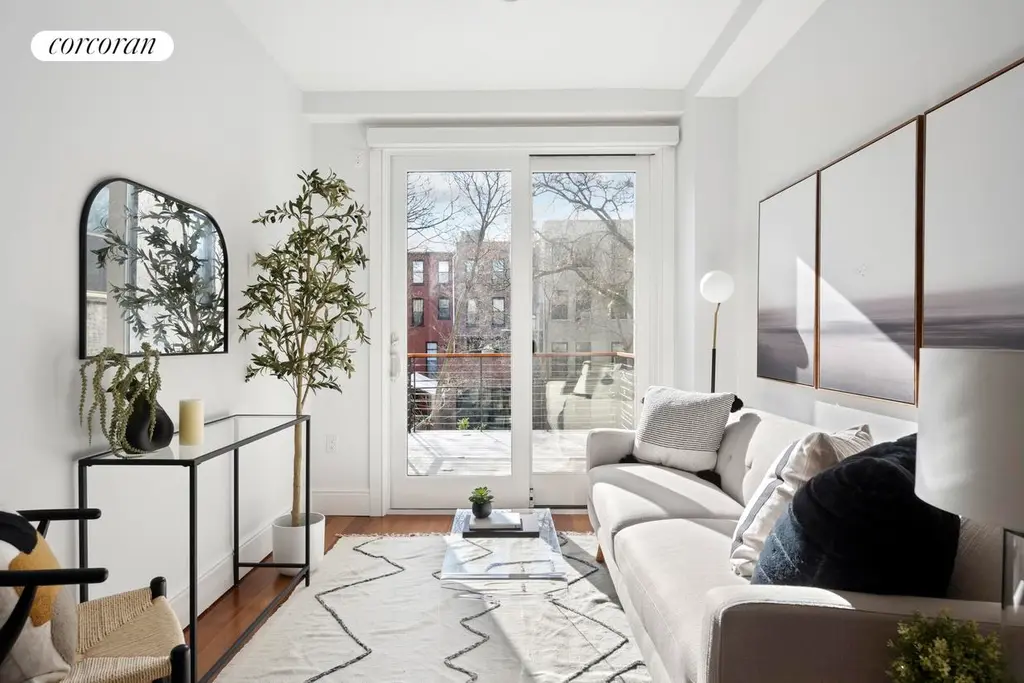
984 Bergen Street, #RESIDENCE3 (Corcoran Group)
Sheepshead Bay
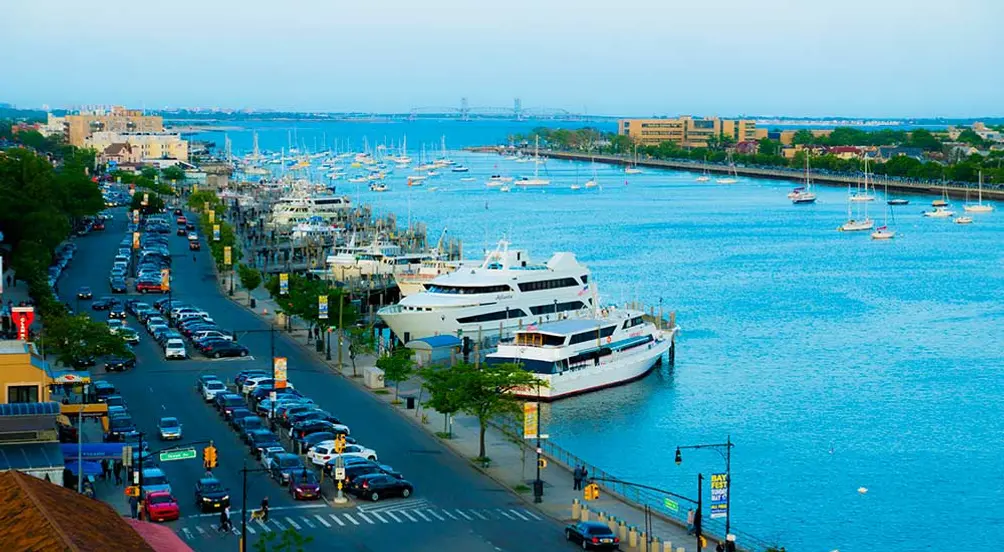 via VUE Brooklyn condominium
via VUE Brooklyn condominium
How did one frightening-looking fish give a neighborhood its name? The waters of an inlet of the Atlantic Ocean teemed with sheepshead saltwater fish to a point that set it apart from the nearby Brighton and Manhattan Beaches. Brownstoner notes that while sheepshead fish are no longer found in local waters, the area does have restaurants serving plenty of other seafood.
Avalon Brooklyn Bay, #PH29C
$1,795,000 (+1.1%)
Sheepshead Bay | Condominium | 3 Bedrooms, 3 Baths | 1,927 ft2
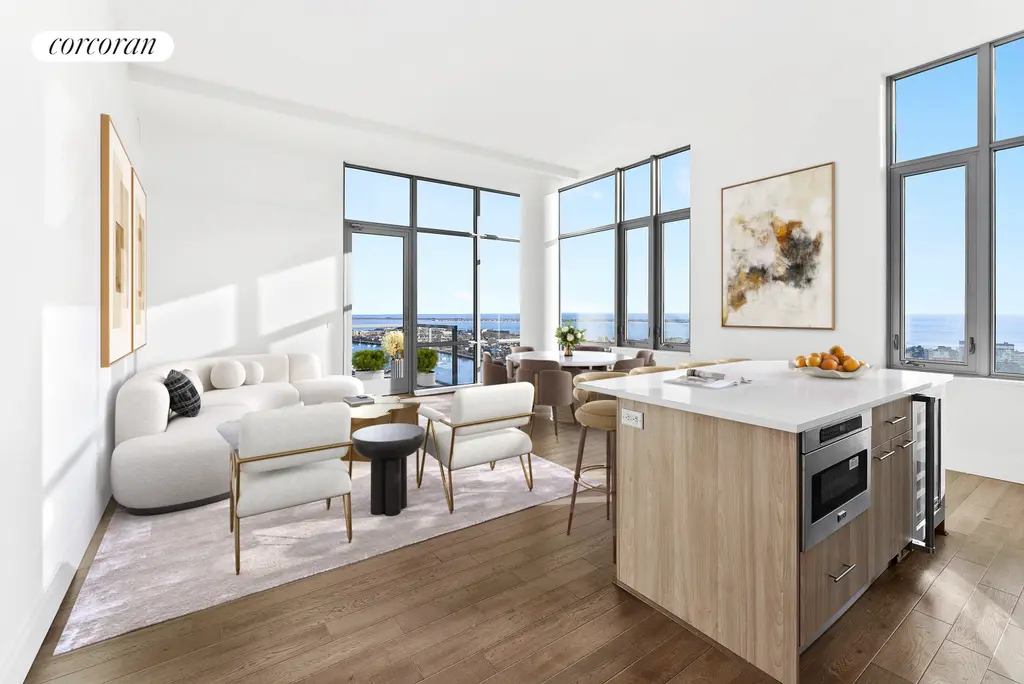
Avalon Brooklyn Bay, #PH29C (Corcoran Group)
 All images via Douglas Elliman
All images via Douglas Elliman
Red Hook is enjoying a bit of a residential renaissance now, but has been of importance to Brooklyn since the Revolutionary War. The red soil at the point of South Brooklyn inspired part of its name, and the second part is the Anglicization of hoek, which is Dutch for “point.”
The Red Hook Lofts, #5D2
$2,100,000 (-6.7%)
Red Hook | Condominium | 2 Bedrooms, 2.5 Baths | 1,917 ft2
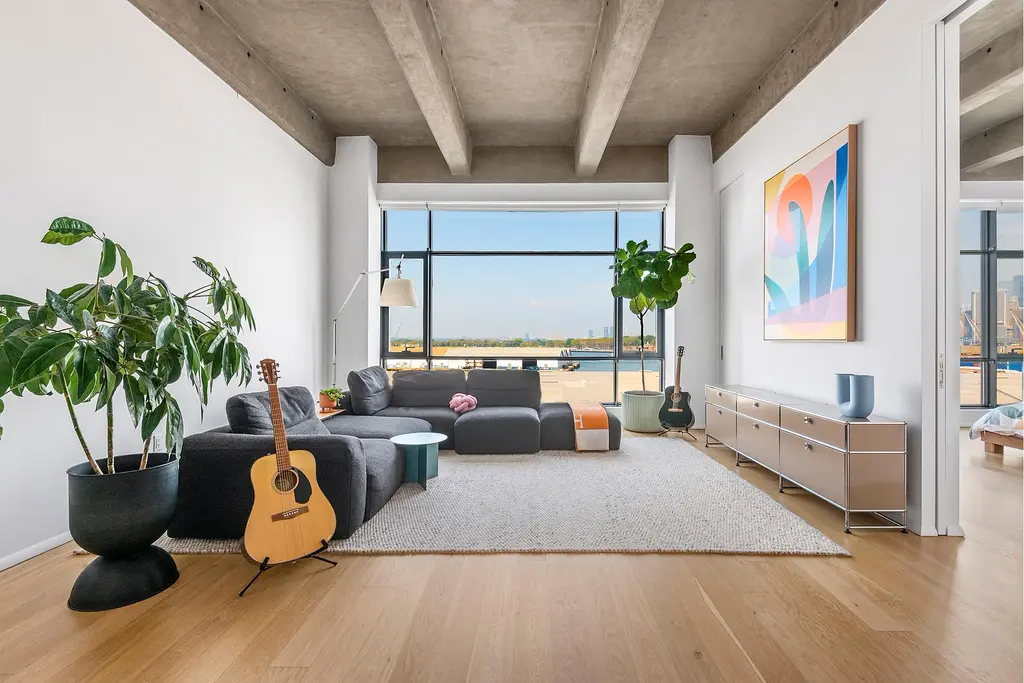
The Red Hook Lofts, #5D2 (Douglas Elliman Real Estate)
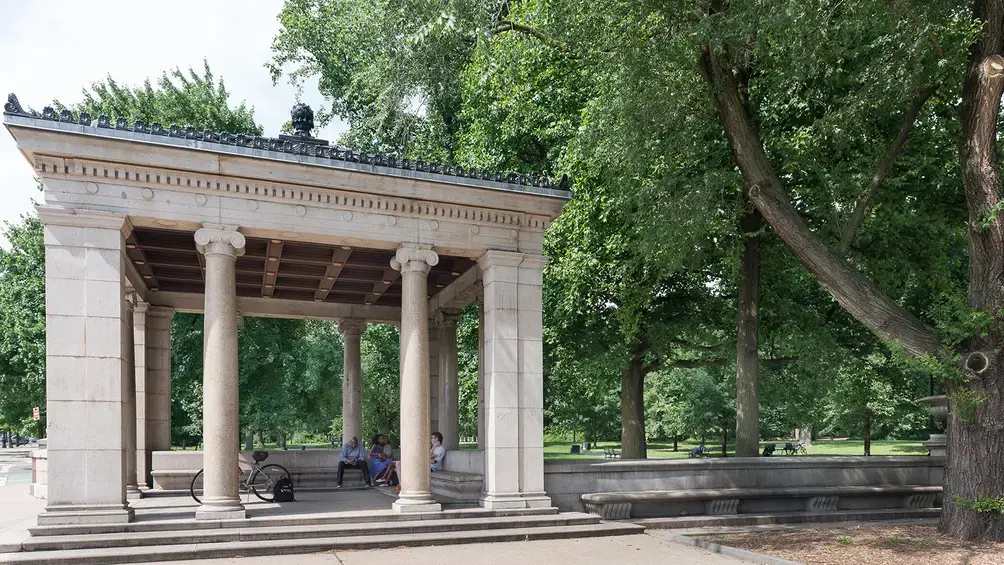 Windsor Terrace (CityRealty)
Windsor Terrace (CityRealty)
Windsor Terrace sounds more like a quaint British village than a New York City neighborhood, and was indeed given that name by English settlers (much like the nearby Kensington, as Brownstoner reports). Today, New Yorkers of all stripes are attracted to what appears to be the best of both worlds: a peaceful environment with easy access to Prospect Park and Park Slope hot spots
185 Prospect Park Southwest, #707
$850,000
Windsor Terrace | Cooperative | 2 Bedrooms, 1 Bath | 725 ft2
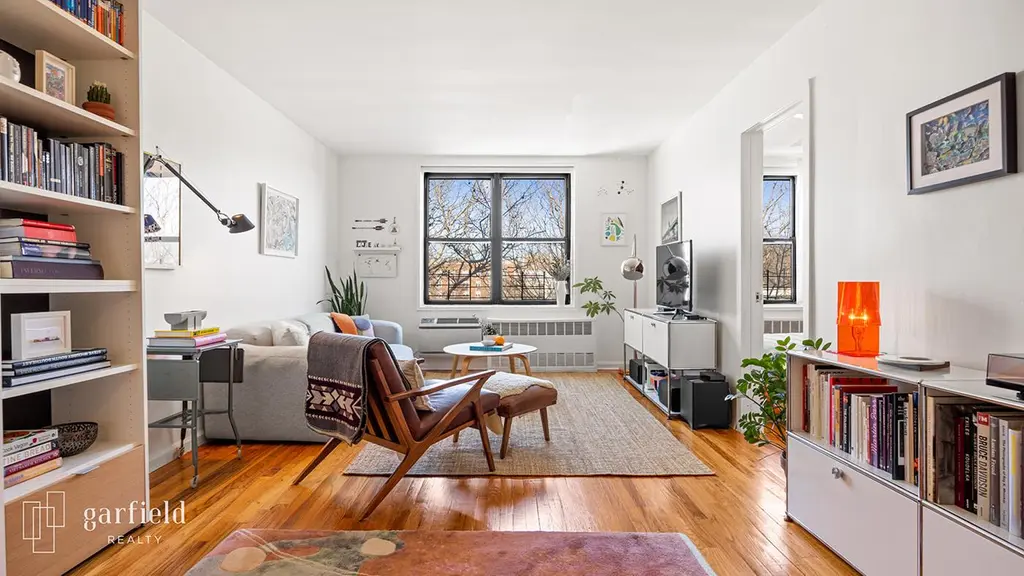
185 Prospect Park Southwest, #707 (Garfield Realty Corp)
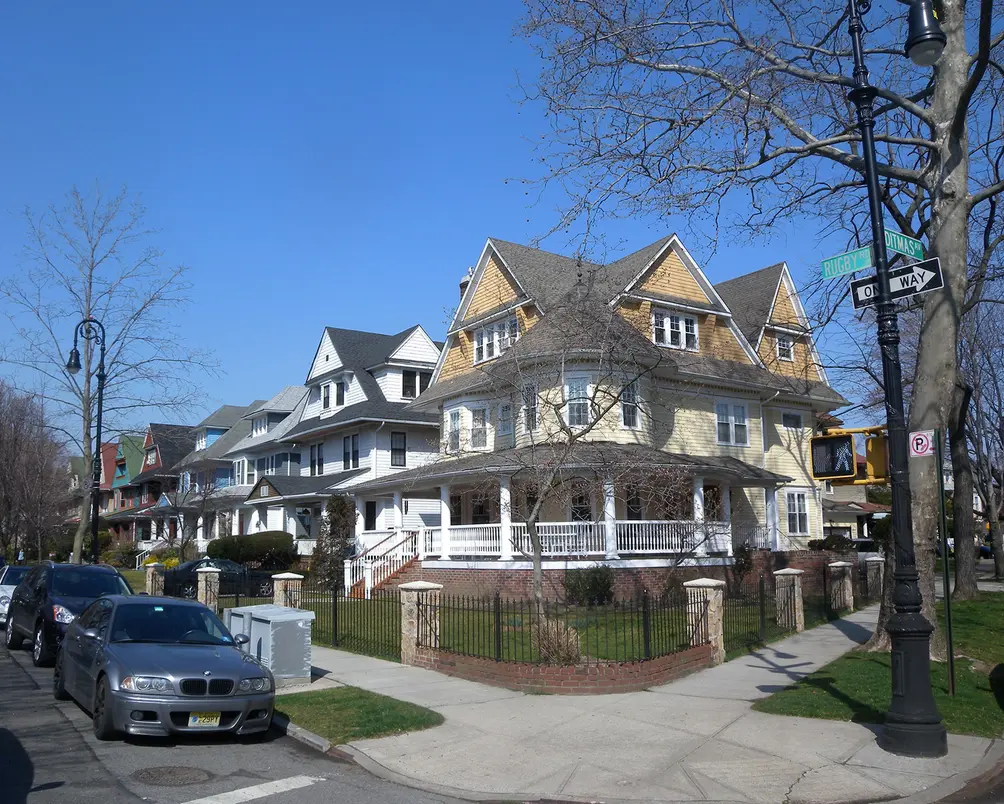 Ditmas Park (Jim.henderson - Own work, CC0, https://commons.wikimedia.org/w/index.php?curid=19269866)
Ditmas Park (Jim.henderson - Own work, CC0, https://commons.wikimedia.org/w/index.php?curid=19269866)
In the early days of New York, a large plot of Brooklyn land was owned by the Van Ditmarsen family. At the beginning of the 20th century, when real estate developer Lewis H. Pounds began developing the area, he named it in honor of its former owner.
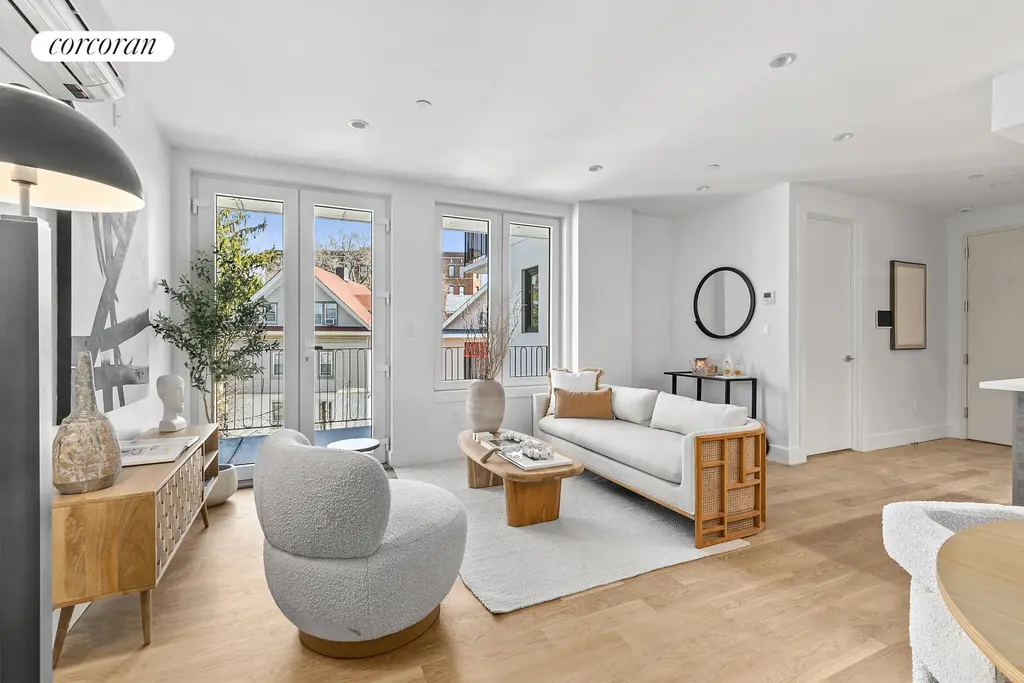
Stratford Terrace, #203 (Corcoran Group)
Queens
Astoria
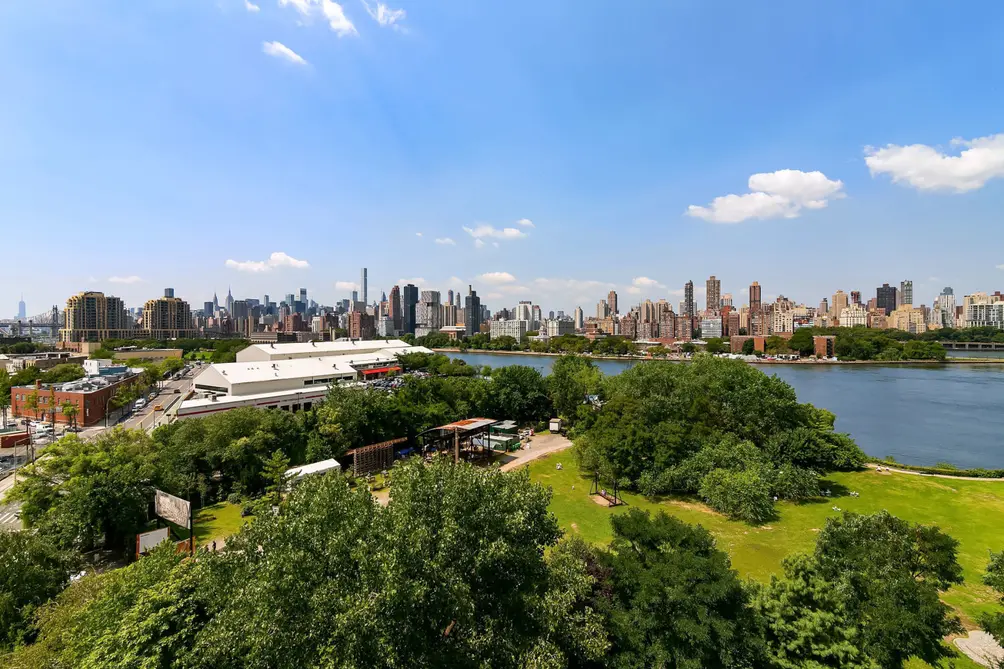 Astoria vistas via PACS
Astoria vistas via PACS
Starting in the middle of the 17th century, this riverfront stretch of what is now Queens was originally known as Hallet's Cove in honor of its first landowner. Centuries later, fur merchant Stephen Halsey appealed to the state legislature to name the area in honor of John Jacob Astor, in the hopes that this would persuade the wealthiest man in America to invest in the neighborhood. Mr. Astor only invested $500, and never actually set foot in the neighborhood named after him, but the name stuck thanks to the efforts of his supporters and friends.
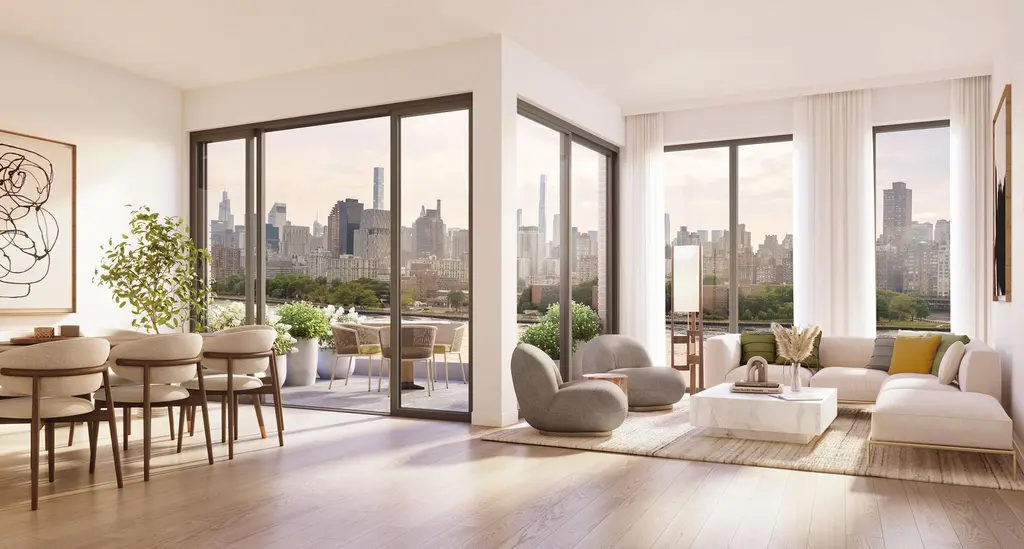
The Marina Astoria, #3C (Nest Seekers LLC)
Forest Hills
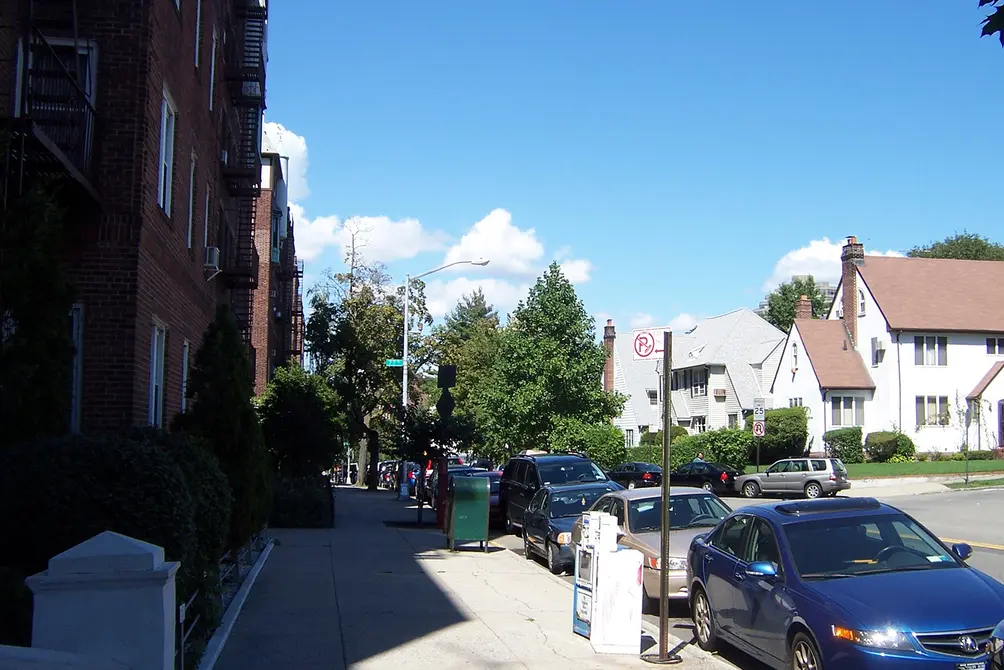 Forest Hills (User:Wasted Time R, CC BY 3.0, https://commons.wikimedia.org/w/index.php?curid=52379727)
Forest Hills (User:Wasted Time R, CC BY 3.0, https://commons.wikimedia.org/w/index.php?curid=52379727)
Before an early 20th century developer named this section of Queens in honor of its proximity to Forest Park and its high elevation, it was known as Whitepot. Some say this was in honor of lore saying English settlers got the land in a trade with Native Americans in exchange for three white pots; others claim it was the anglicization of the Dutch name Whiteput.
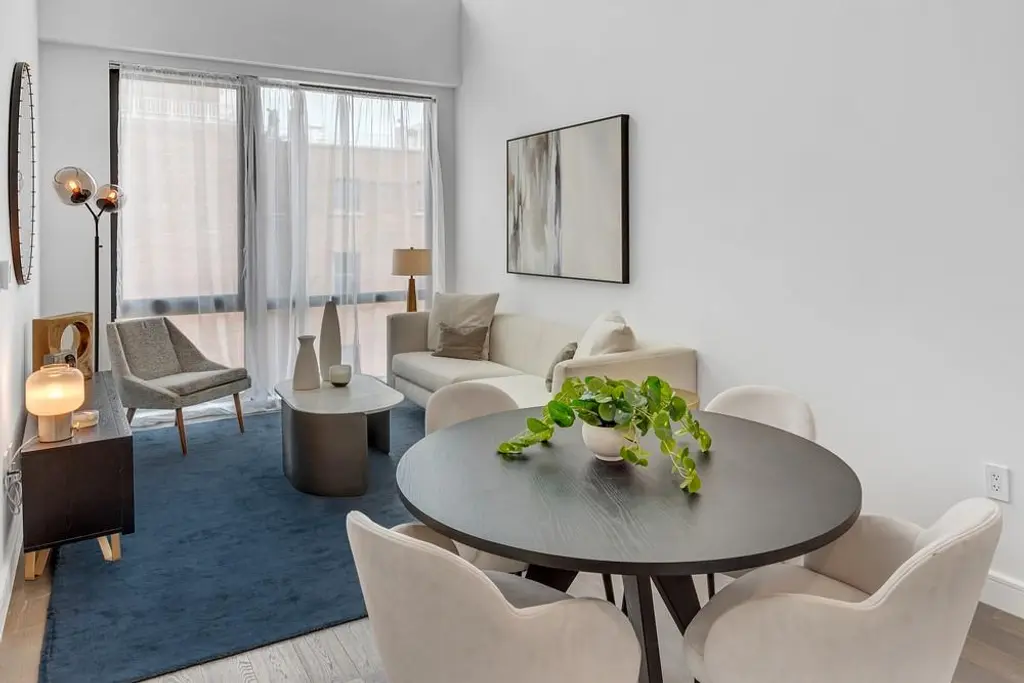
BLVD, #7D (Modern Spaces)
Elmhurst
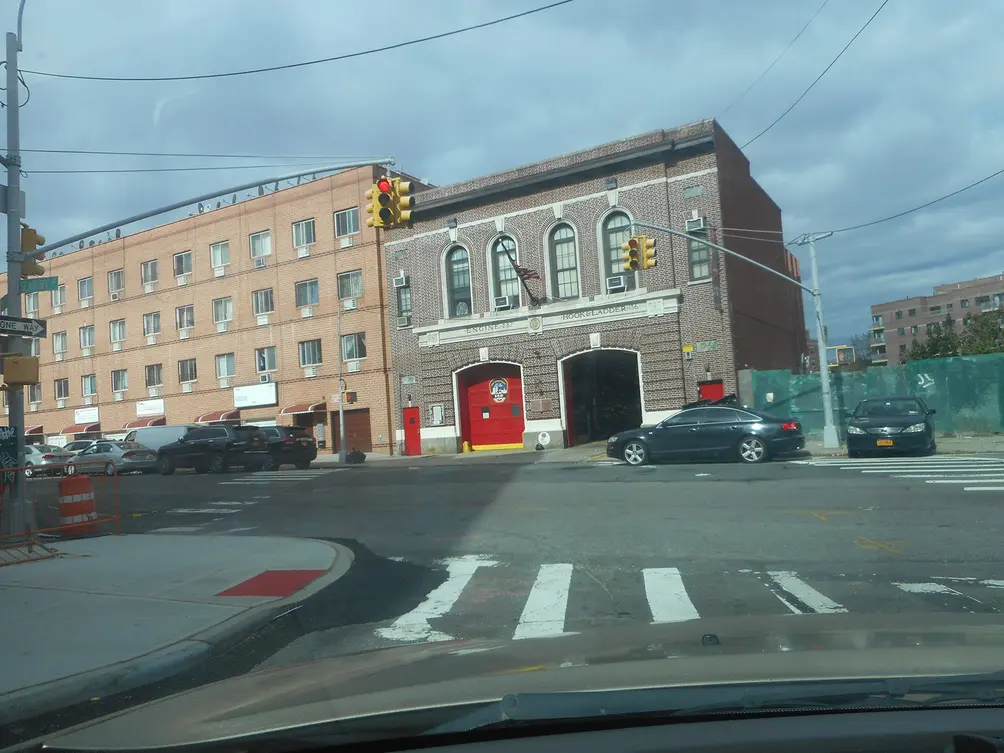 Elmhurst (DanTD - Own work, CC BY-SA 4.0, https://commons.wikimedia.org/w/index.php?curid=75913229)
Elmhurst (DanTD - Own work, CC BY-SA 4.0, https://commons.wikimedia.org/w/index.php?curid=75913229)
When early British colonists arrived in this section of what is now Queens, they called their new town, um, Newtown. Decades later, as carriages and streetcars brought more people to the area, a developer lobbied for a more upscale name. Many of the area’s hills had elm trees, and “hurst” is an old English and Germanic word for “wooded hill.” (P.S. Some Elmhurst schools and streets still use the Newtown name.)
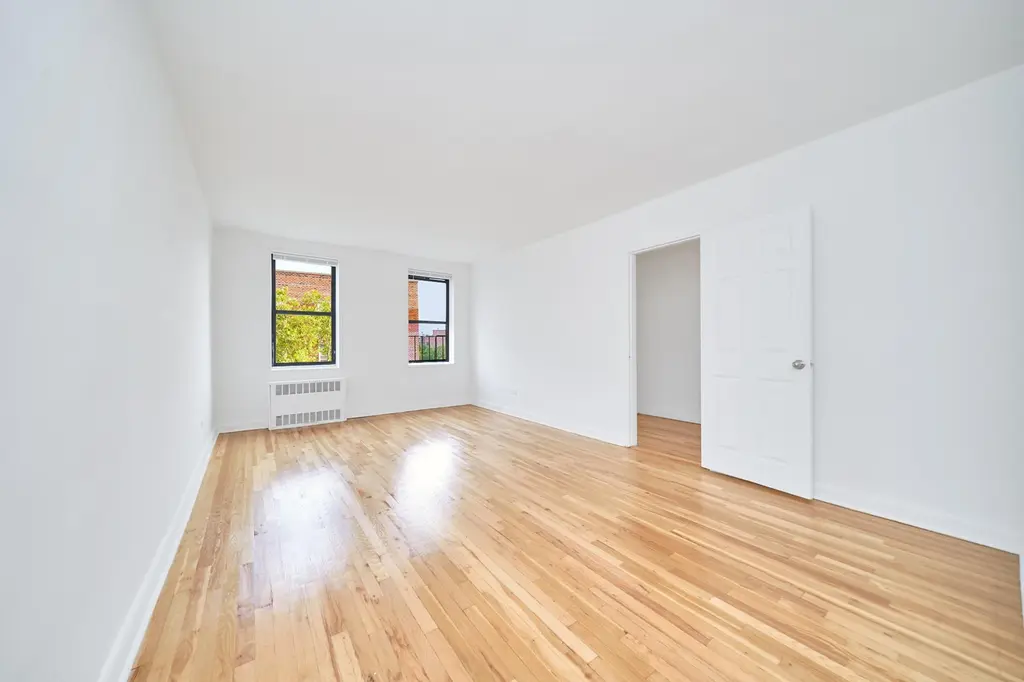
84-19 51st Avenue, #6B (Keller Williams Realty Empire)
Flushing
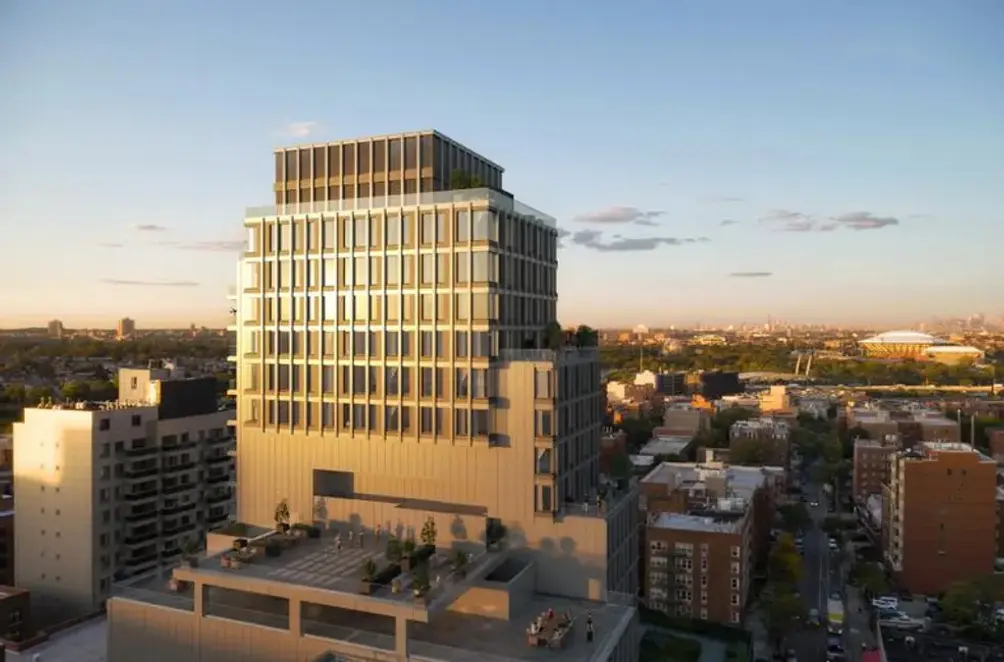 Flushing (Global Real Estate Ventures Group)
Flushing (Global Real Estate Ventures Group)
Between the U.S. Open, delicious culinary options in its Chinatown, the New York Times-celebrated Queens Night Market, and new commercial and residential development, Flushing is having a bit of a moment. However, the neighborhood dates back to 1645, when it was first established under charter of the Dutch West India Company and named Vlissingen after its European base. Locals started to call it Vlishing, but an influx of British settlers anglicized it to Flushing.
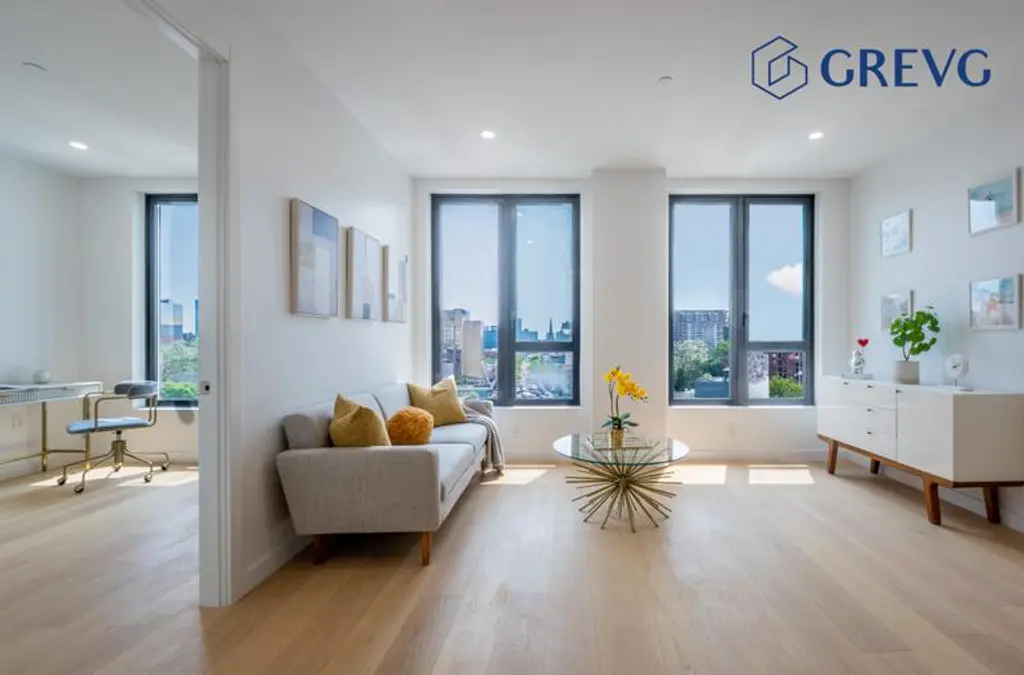
134-16 35th Avenue, #11D (GLOBAL REAL ESTATE VENTURES GROUP LLC)
Sunnyside
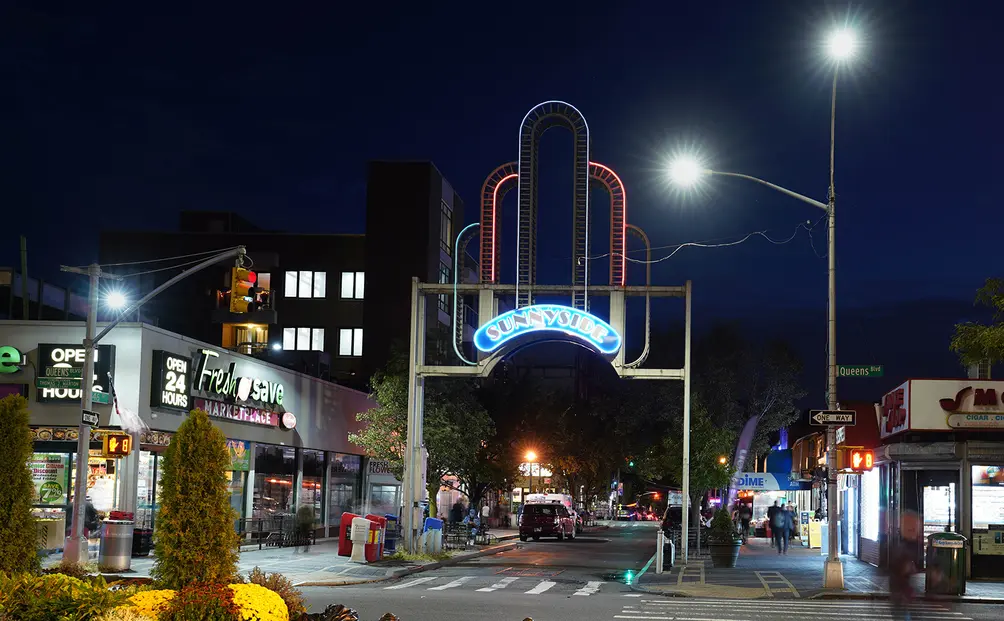 Sunnyside (Mpcoder - Own work, CC BY-SA 4.0, https://commons.wikimedia.org/w/index.php?curid=115198795)
Sunnyside (Mpcoder - Own work, CC BY-SA 4.0, https://commons.wikimedia.org/w/index.php?curid=115198795)
The Sunnyside section of Queens was named in honor of “Sunnyside Hill,” which French Huguenot family the Bragaws named their area estate at the beginning of the 18th century. With developers turning their attention to the neighborhood in the present day, things are looking bright.
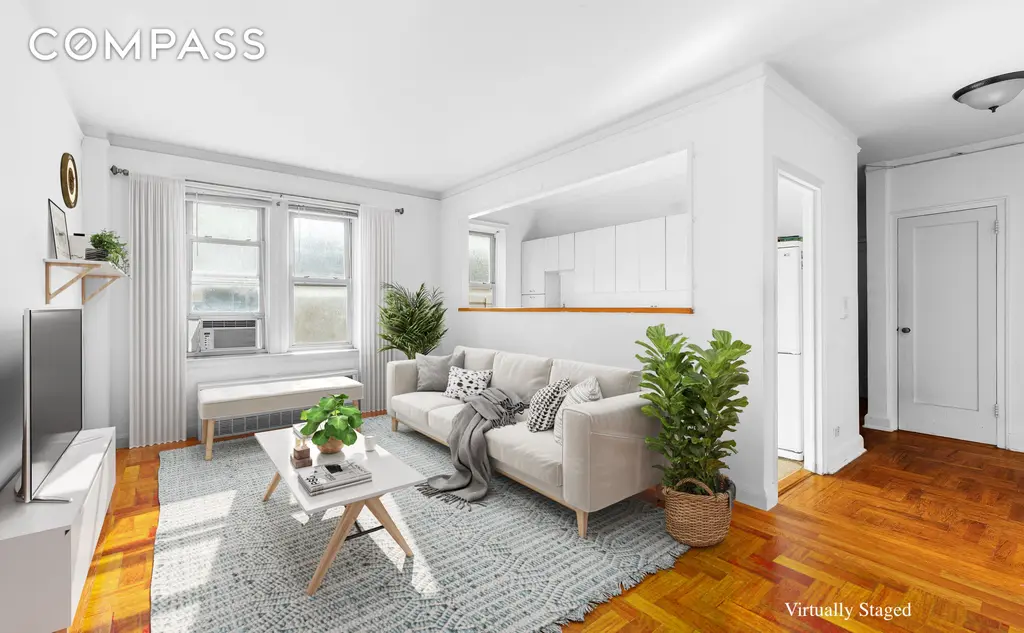
48-17 42nd Street, #4B (Compass)
The Bronx
Spuyten Duyvil
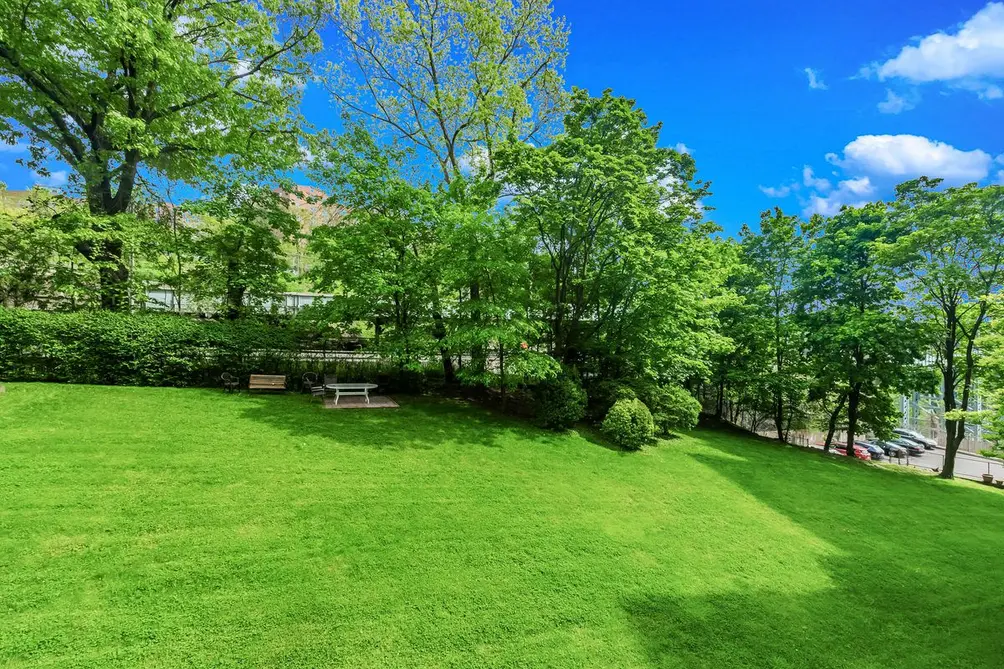 Spuyten Duyvil via Halstead
Spuyten Duyvil via Halstead
In the present day, Spuyten Duyvil offers the best of both worlds with peaceful waterfront homes within commuting distance of Midtown Manhattan. But in its early days, the creek's turbulent currents and deaths of people trying to swim it inspired its Dutch name, which can be pronounced to mean either "the devil's whirlpool" or "to spite the devil."
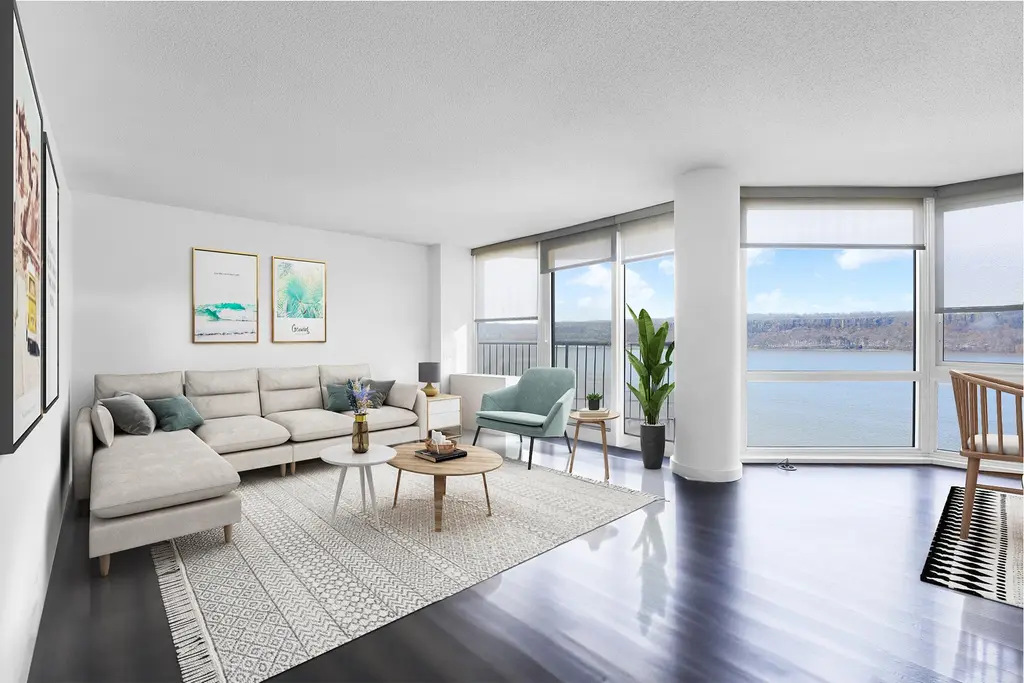
La Rive, #3A (Douglas Elliman Real Estate)
Mott Haven
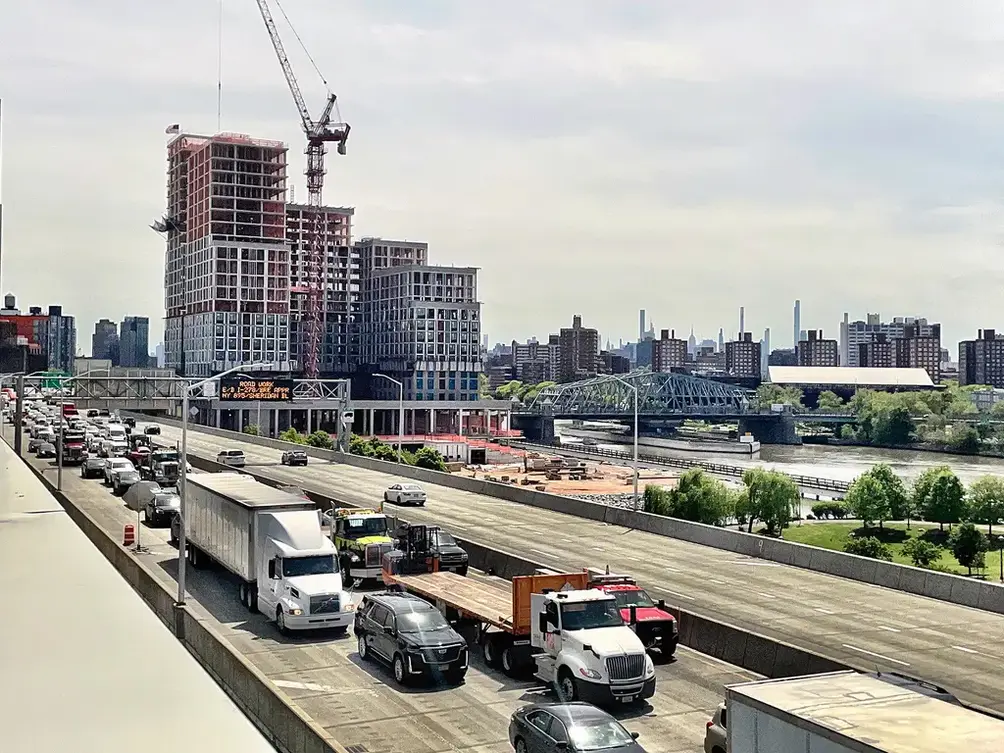 Mott Haven circa 2022 (CityRealty)
Mott Haven circa 2022 (CityRealty)
Following recent rezonings, the Mott Haven section is seeing new construction and attracting new attention in the Bronx. However, it was first set apart in 1828, when industrialist Jordan Mott purchased tracts of land from the Morris family (in whose honor Morrisania is named) to establish a foundry for his ironworks. Locals resented the intrusion of his industrial work on what was previously a peaceful and bucolic neighborhood.
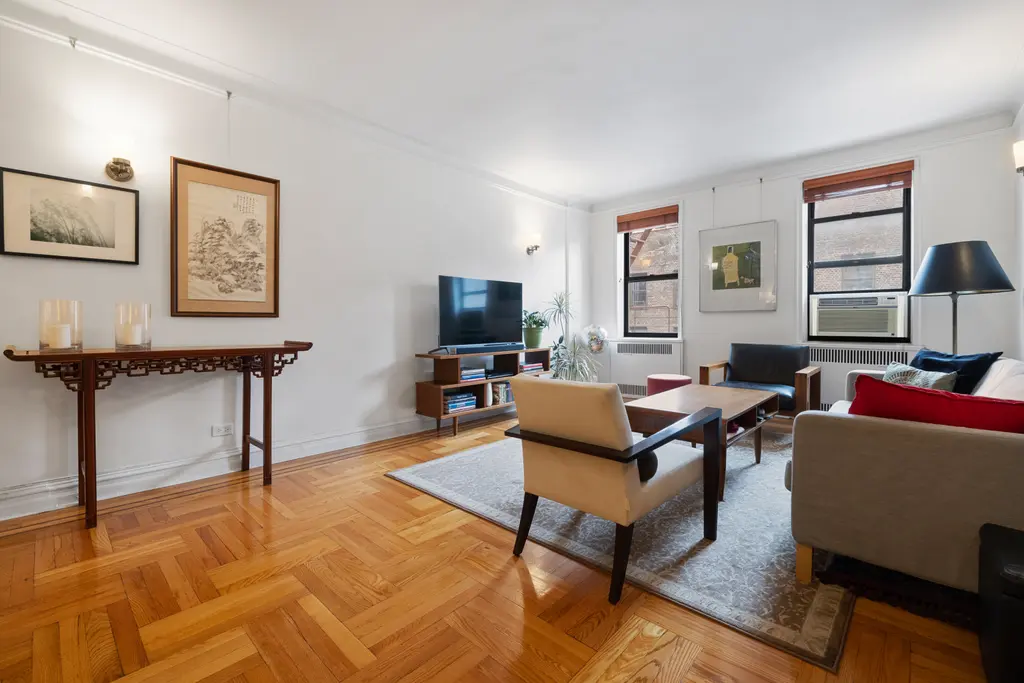
860 Grand Concourse, #6F (Bank Neary Inc)
Would you like to tour any of these properties?
Just complete the info below.
Or call us at (212) 755-5544
Would you like to tour any of these properties?

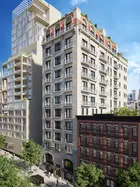
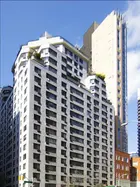
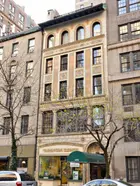
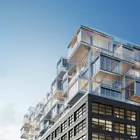
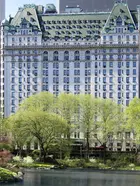
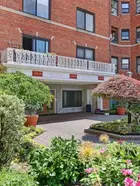
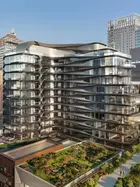
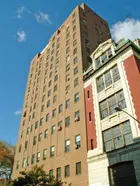

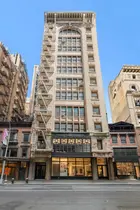
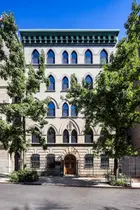
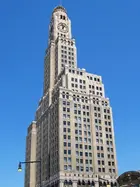
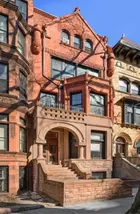
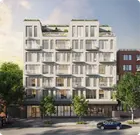
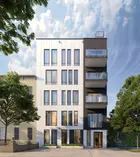

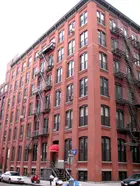
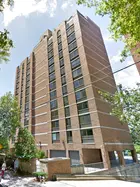
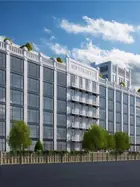
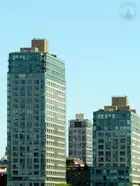
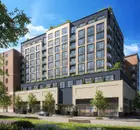
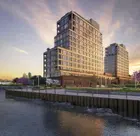
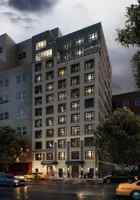
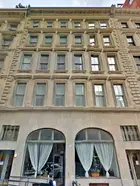
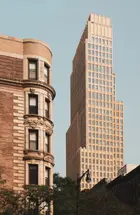
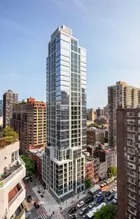
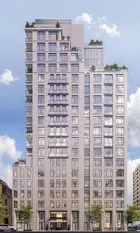
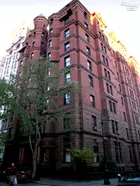
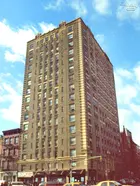
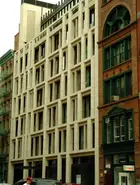
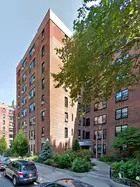
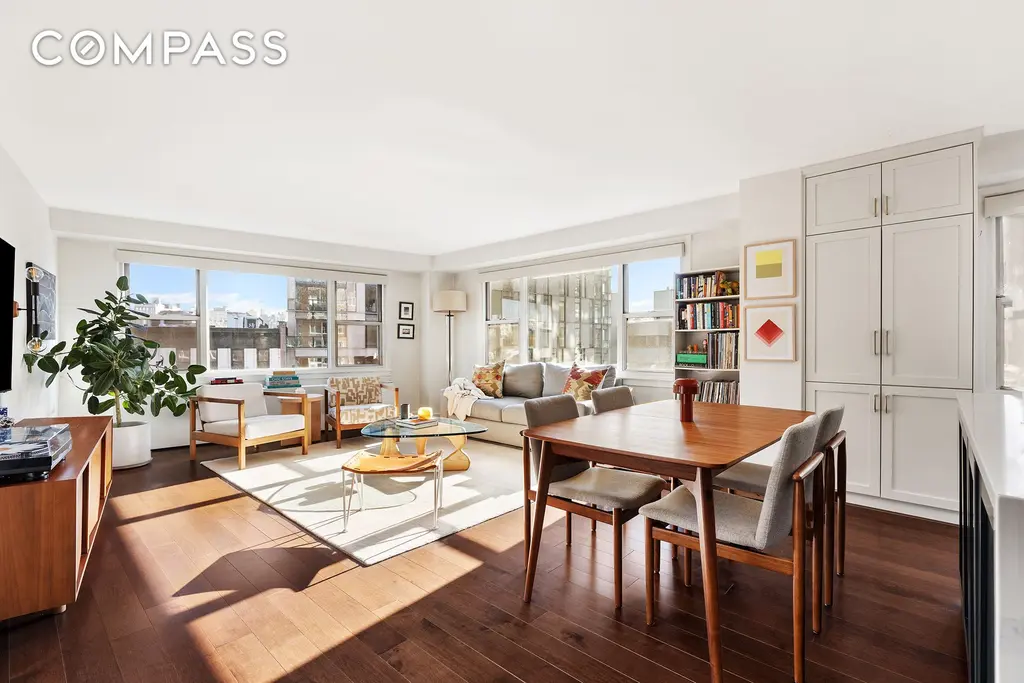
 6sqft delivers the latest on real estate, architecture, and design, straight from New York City.
6sqft delivers the latest on real estate, architecture, and design, straight from New York City.
